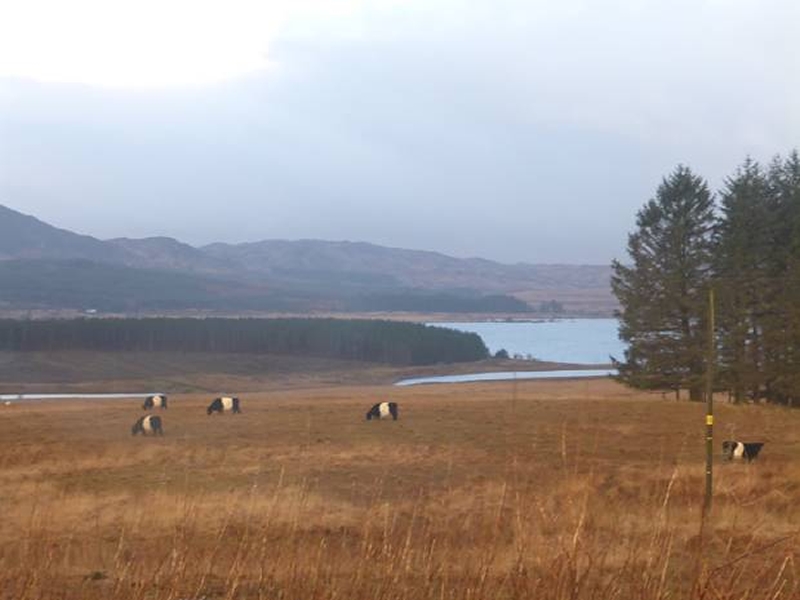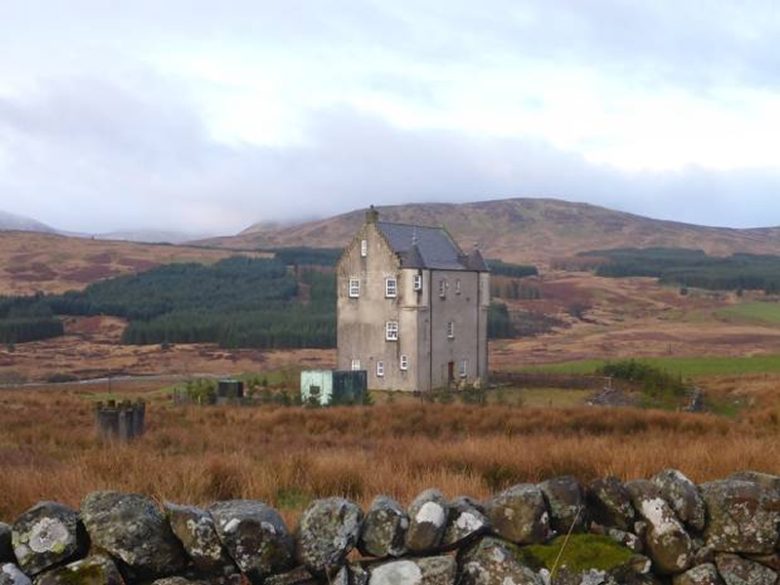Back to fast Broadband and short lived Siberian Cold
A visit to our midland family was our first port of call, we had a new family member to meet. In chilly weather we made our way to Oxford from Heathrow where we were to meet Jonty for a quick pint in a pub near the coach station. Jonty’s welcome was warm as always but the weather hit the tubes with horizontal rain and a brisk cold wind that shoved our memories of blissfully hot Darwin right back down under as we trundled our heavy bags to the train station for a quick ride to Bicester where Jonty and Jenny live.
The next morning it was cold and dry as we went in to Oxford again and Jonty showed us the lab where he is conducting his seabed sand experiments to assist the future of offshore windfarm development and then after a brief whizz through the Natural History Museum and the bacteria exhibition we had lunch in a favourite old Oxford pub, The Turf, where Bill Clinton famously revealed he once smoked dope.
Jonty kindly loaned us his car that he had been planning to sell at some stage, so the next day we sped north, keen to meet our new grandson Milo, born on November 1st last year and everyone else of course.
Rob and I spent hours getting to know Milo and seeing how gentle Darcy could be with him. Generally Darcy shows total disinterest towards Milo but he’s too kind and sociable to be the jealous kind, he just settles in his bed close by when everyone else is ‘ooing’ and ‘aaing’ over the little baby.
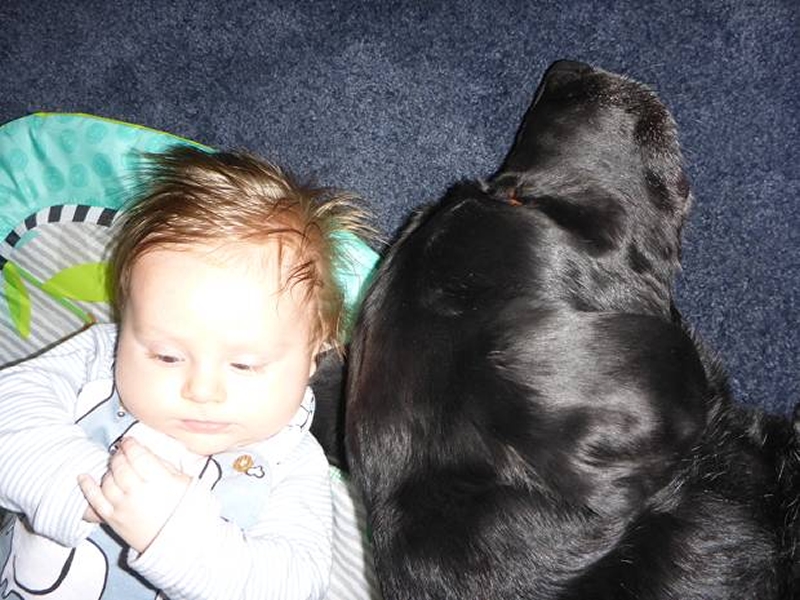
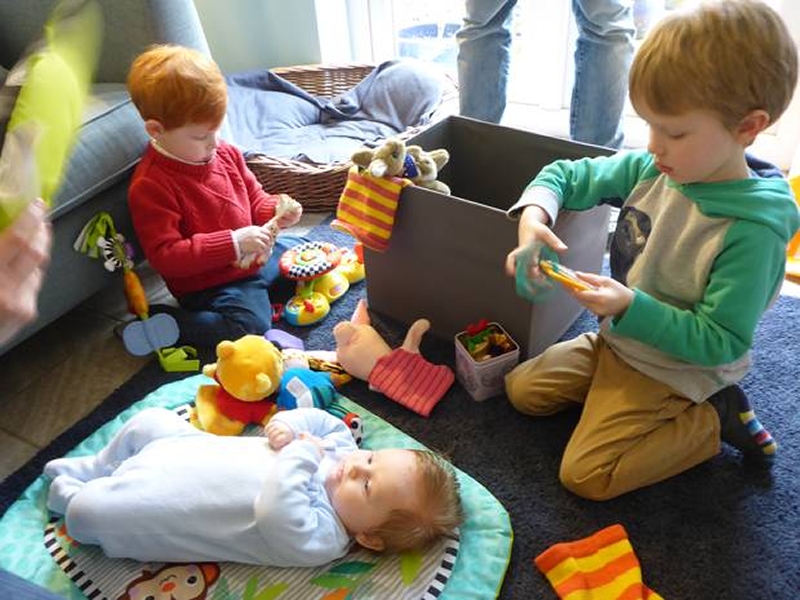
We had numerous dental and medical appointments to attend to during our visit and it was while leaving the waiting room in my dentist’s practice that a voice said softly, “Hello Barb.” I turned to see our dear friend and fellow self-employed driving instructor John Hoult who was waiting for his lovely wife Jane to finish her appointment. It was getting to be that time of day so we had lunch together in the Lord Nelson pub in the Market Square. What a lovely spontaneous get together that was and we finished by arranging to go to their home for a meal another day to hear their exciting retirement plans.
At the doctors we both had x-rays done, Rob wanted to see the inner workings of his knee and I wanted to know if there was any serious damage to my left foot and why my upper right arm was hurting, could it be frozen shoulder, tendonitis, arthritis or something worse?
My radiographer revealed there was a broken bone in my foot but the arm was sound so that pain had another cause.
Nice walks in the early spring sunshine up Manor Lane near where Charly, Tom, Milo and Darcy live brought roses to our cheeks and smiles to our faces as Darcy pursued his long enjoyed antics with his muddy puddle. Pushing the pram up a fairly steep hill added a new dimension to our daily exercise. Darcy also accompanied us all over town on our errands.
To Syd in the shoe shop to get a new key cut while Darcy demolished his treat, then on to visit Rosemary in Crown House Care Home where she now lives and on to the Lord Nelson (Nelly) for some lunch. Darcy, nose twitching and I waited outside the butchers while Rob bought himself some sausages then home to Charly’s and some admin involving a new mobile phone and starting the procedure to get our Australian Visas so we would not have to leave the country at the end of each three month period.
Then came the day we would have lunch with my cousin Greg and his wife Janet before driving to our southern family in Broadstone, Dorset.
Our first outing was to Arne on the shores of Poole Harbour and the weather had taken a turn for the better with blue skies and a warm sun. Never before have I seen live ragworms appearing to swim happily in the shallows and the gorse was in joyous golden bloom at another of our godspots, Rockley Park.
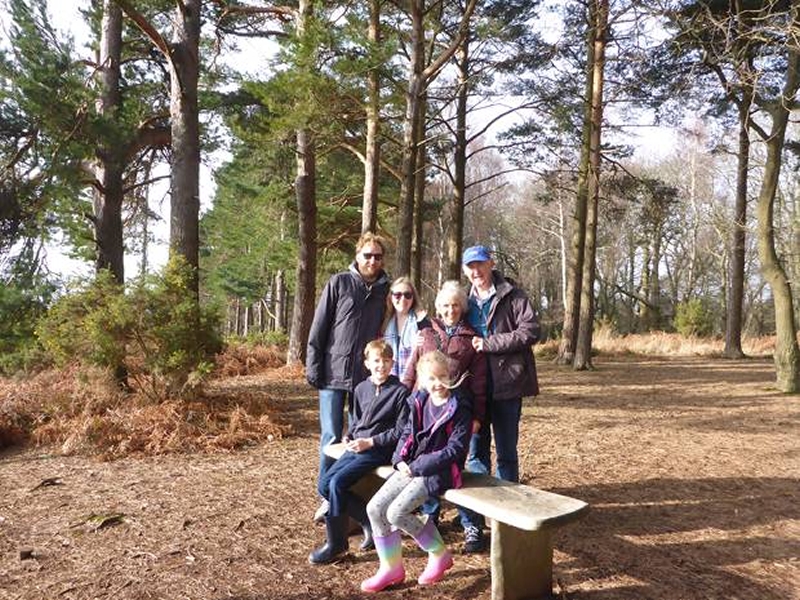
There is a kind of time warp along shorelines, where the in and out flowing of the waves has been taking place for eons and the waters that link to the channel and the world’s oceans beyond will continue their movements driven by the sun and moon long after mankind with its destructive ways is evident only in what it has left behind.
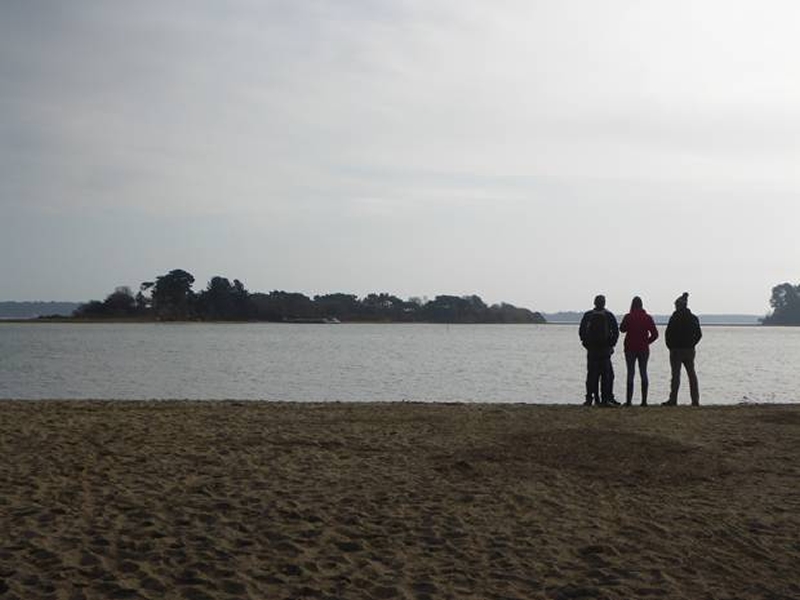
Our perambulations always called for some liquid and nourishing refreshment at the end. After being blown along Bournemouth beach we went into a beach café which was delightfully dog friendly and filled our daily doggy needs; there was even a brief contretemps, but if only humans could settle their differences so quickly. Amidst loud banter and the clattering of dishes, hissing of the overworked coffee machine and the ticking of at least eleven grandfather clocks were supped our delicious cups of hot chocolate.
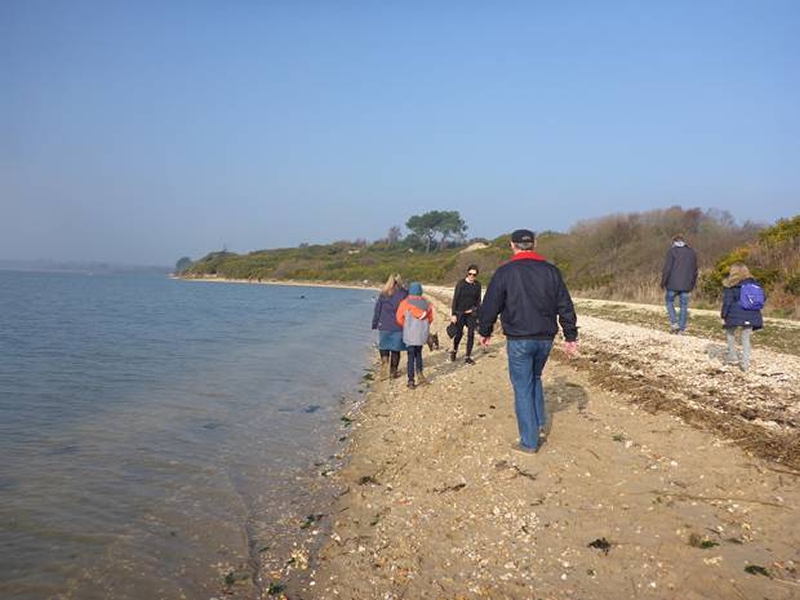
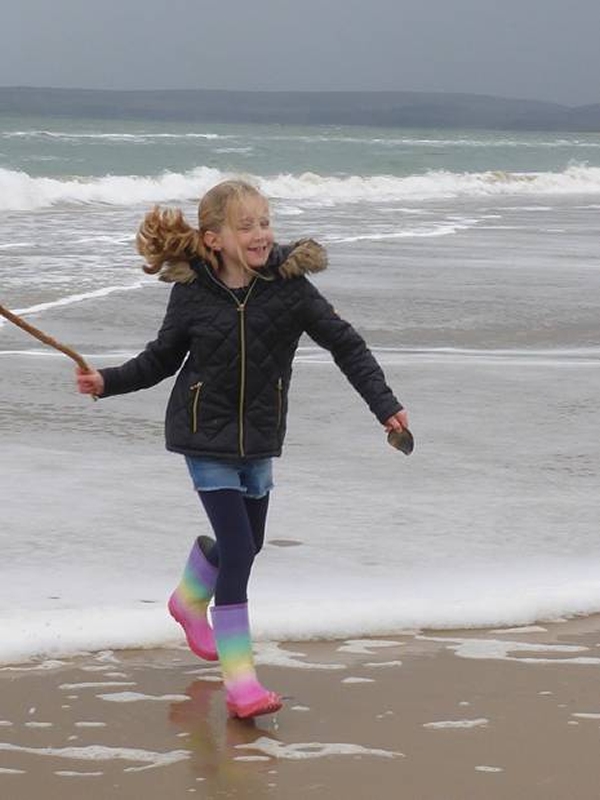
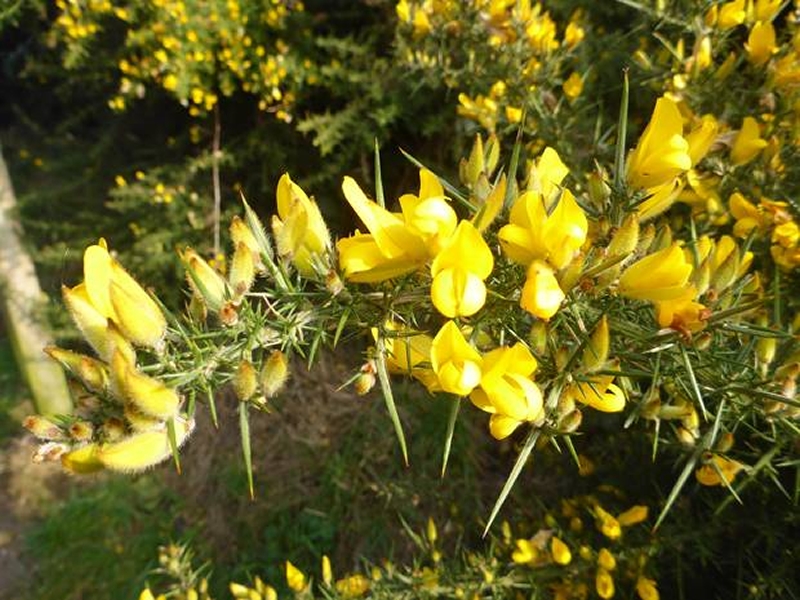
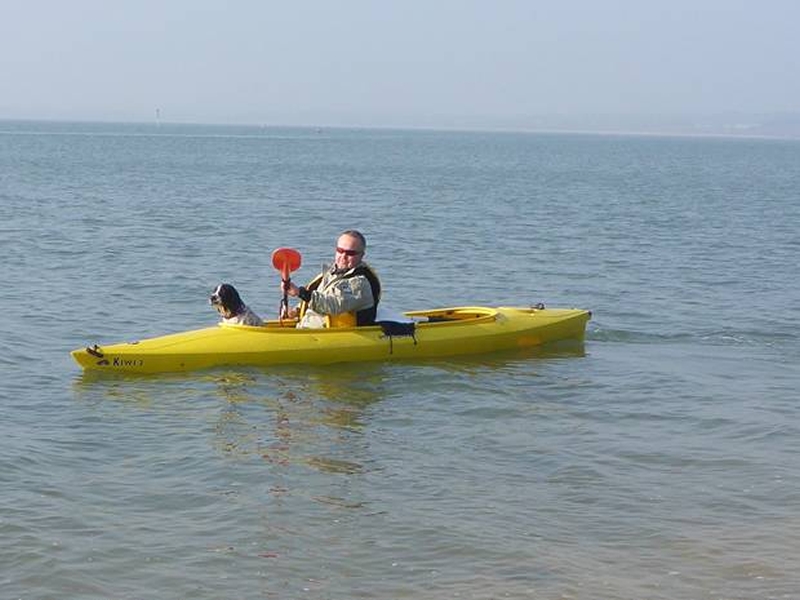
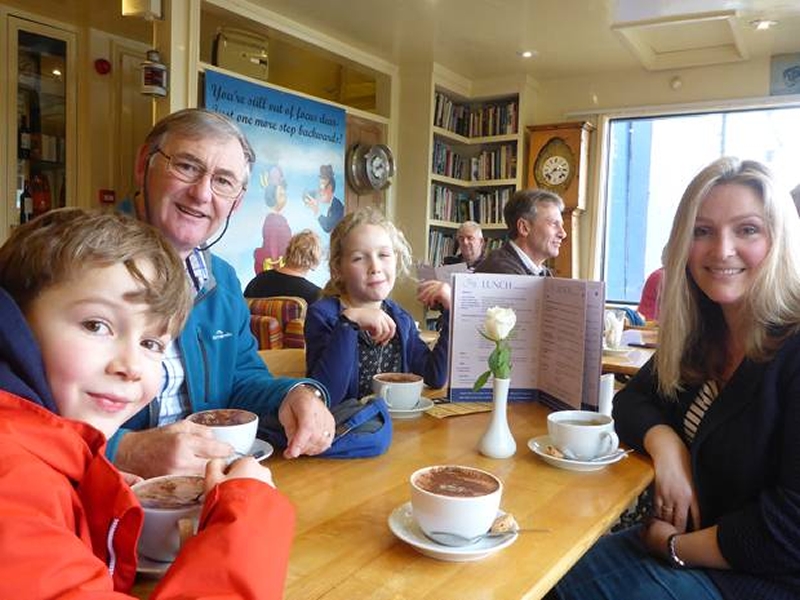
Bassetts in Springtime, Ruby’s Book Project and Henry goes to School in a Dress
It was all blue skies and new life down on Brother Robin’s Devonshire Farm. A fine summer last year and a dry spring had given his ewes healthy pregnancies and a good start for their lambs of all colours. During the night I watched the waning moon transect the starlit sky and at first light of day powder frost coated all outside surfaces, natural and man-made.
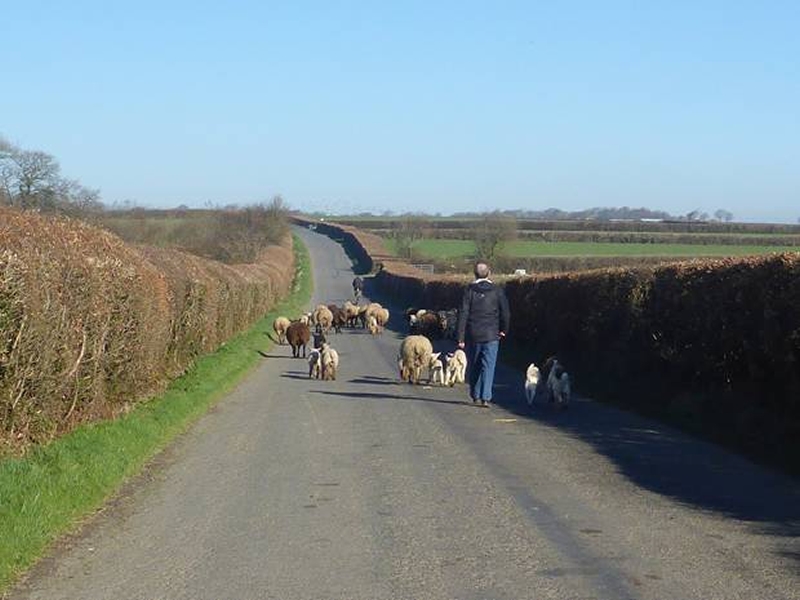
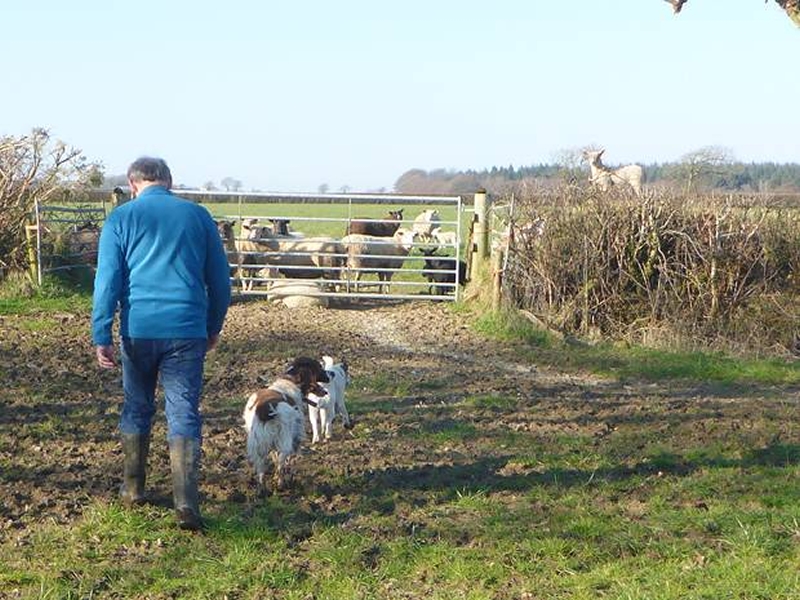
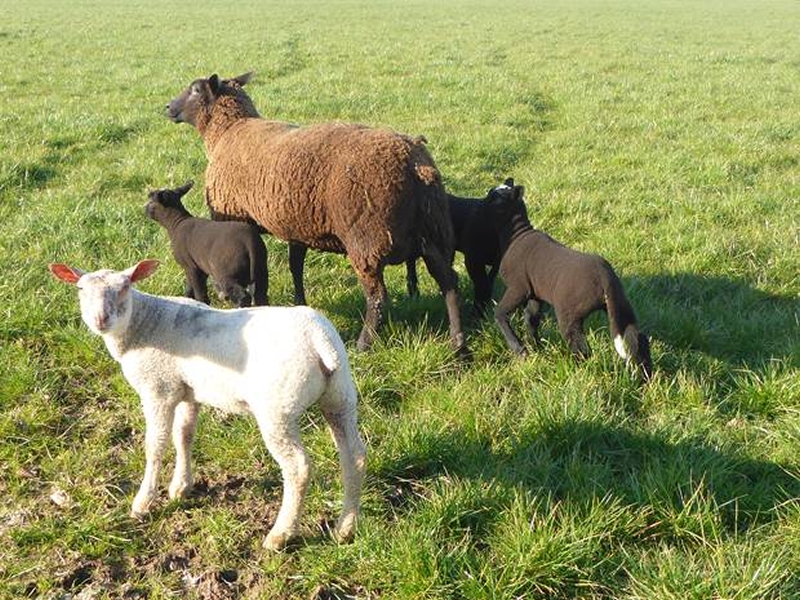
Our easy task was to bring the small flock in for the chilly nights and take them our again the next morning with the help of the two thirteen year old springer spaniels Bud and Jim and Jack the Jack Russell, now sensibly retired from ratting. Black and white Jim’s failing strength in his back legs was far surpassed by his sheer determination to come on these walks with us. So I would hold back and keep him company. He is deaf now and has cataracts but we had meaningful if one sided conversations as we tottered along. His brother Bud is a little more able and has always liked to climb into the small concrete water troughs for a drink ever since he was a pup even though he now struggles to get out.
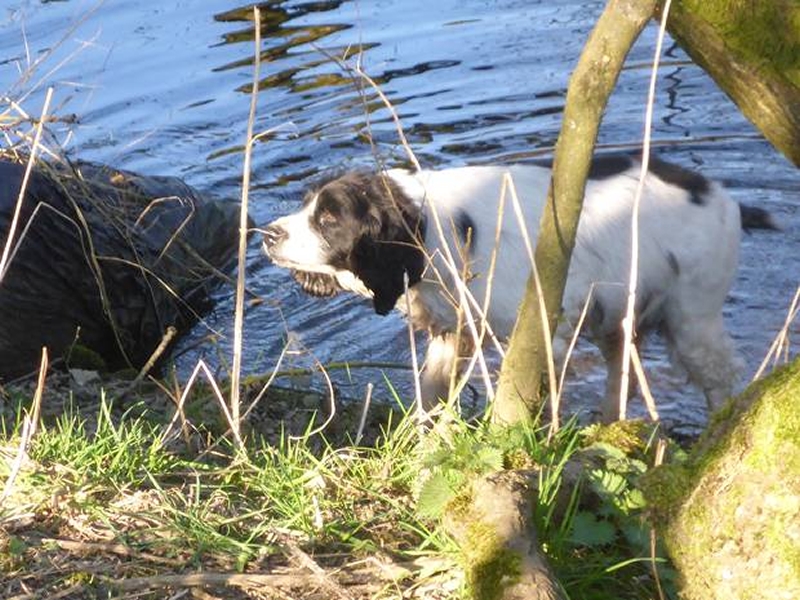
Now that Jack the Jack Russel has retired himself the rats are kept at bay by marksmen who pops away behind the milking parlour as Christopher tends his milking cows inside. They visit twice a week for a couple of weeks at monthly intervals to control the numbers that have over the years eaten up through the concrete floor of the feed store, while Jack now snoozes safely indoors.
Hubby Rob and I went to another favourite beach at Widemouth Bay on the west Cornish coast south of Bude. There was a heat haze in the warm sun as dogs frolicked and chased for the sheer freedom and enjoyment of it. Surfers delayed waiting for the next wave so they could chat with eachother sitting astride their boards. The whole bay was a place apart.
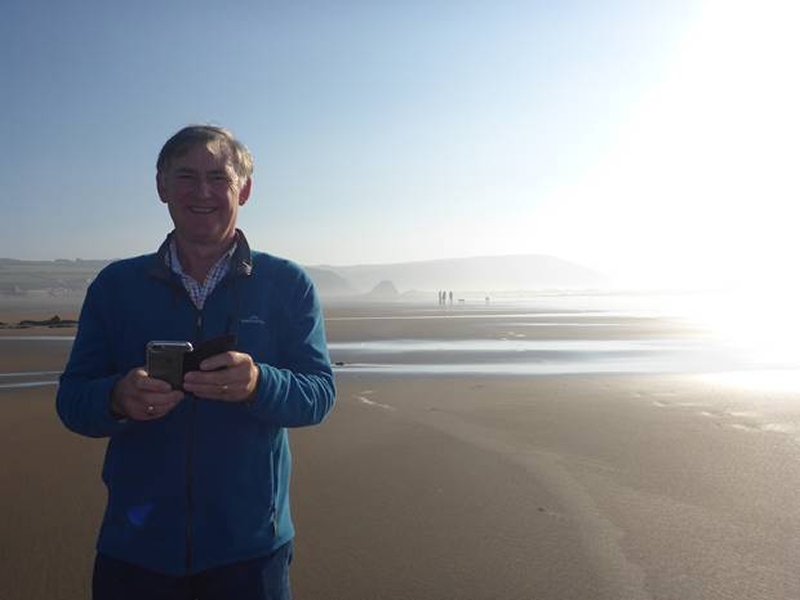
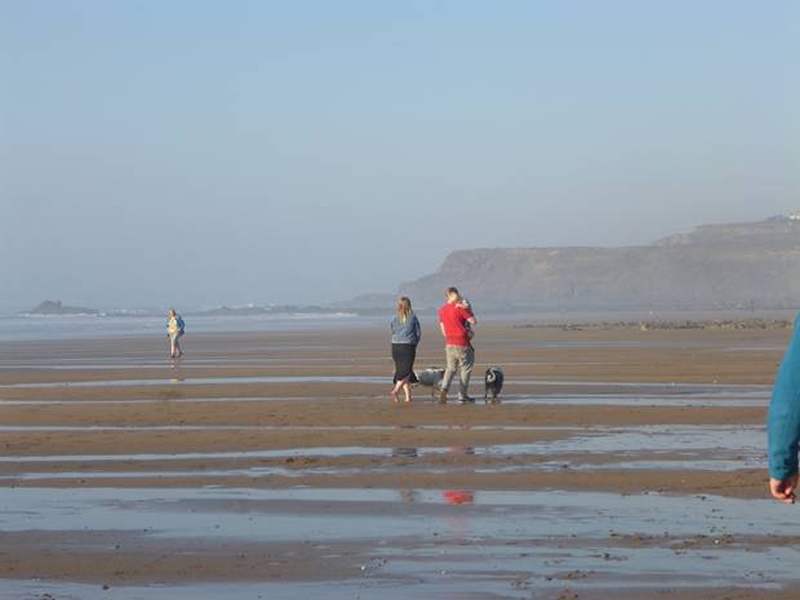
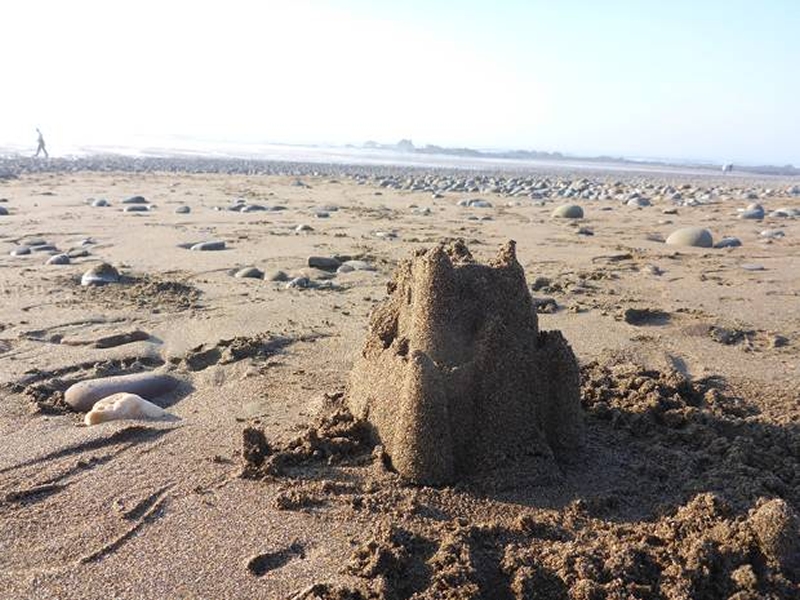
Before leaving Robin we all went for a nice meal at a local pub, The Clovelly Inn at Bratton Clovelly and then returned for a booky week in Broadstone.
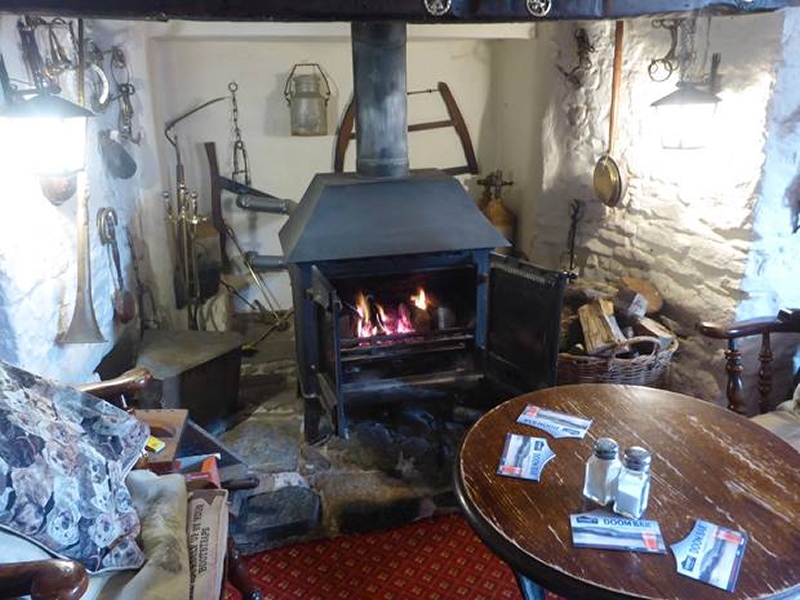
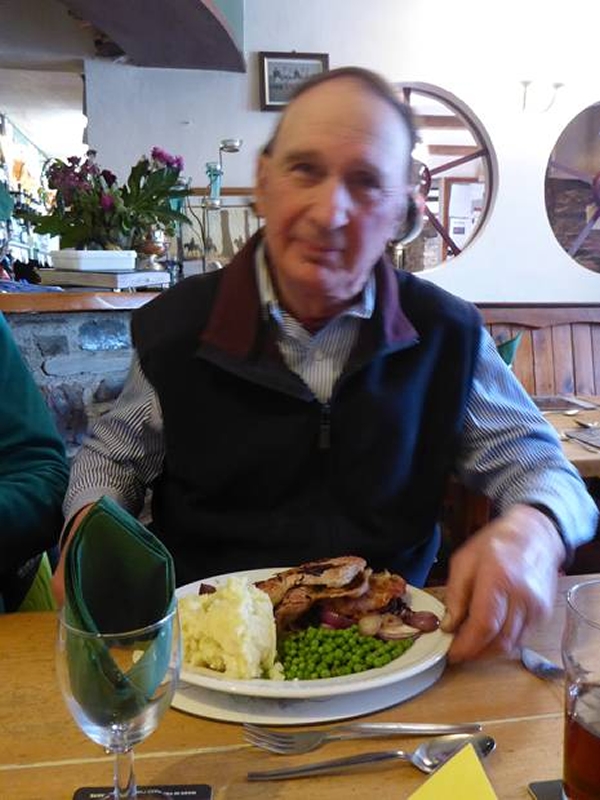
Upton Country Park is an area enjoyed by thousands of families with both local and frequent visitors and grandparents like us from far away. The fine old house looks over the upper lake of Poole Harbour, Holes Bay. Ruby had a reading task from school, to read a favourite book in a fun place, so we decided a photo shoot was called for. We had brought back from New Zealand the book, ‘The Wonky Donkey’ (first published in 2009, words and music by Craig Smith and illustrations by Katz Cowley published by Scholastic in NZ) for the family to read having seen the hilarious You Tube video of the Scottish granny reading it to her baby grandchild, which caused a resurgence in global interest.
Two of the park workers wondered if everything was OK when they saw Ruby sitting on a wood chip pile reading the book. They kindly then listened to her rendition as they squatted in the sunshine. We took further shots as we walked around the park, in the stream, on a boulder in the stream, on top of a sawn tree trunk, inside a wooden wheel and finally beneath a wooden climbing structure in the play area. That would do, Emily only wanted one for Ruby’s homework.
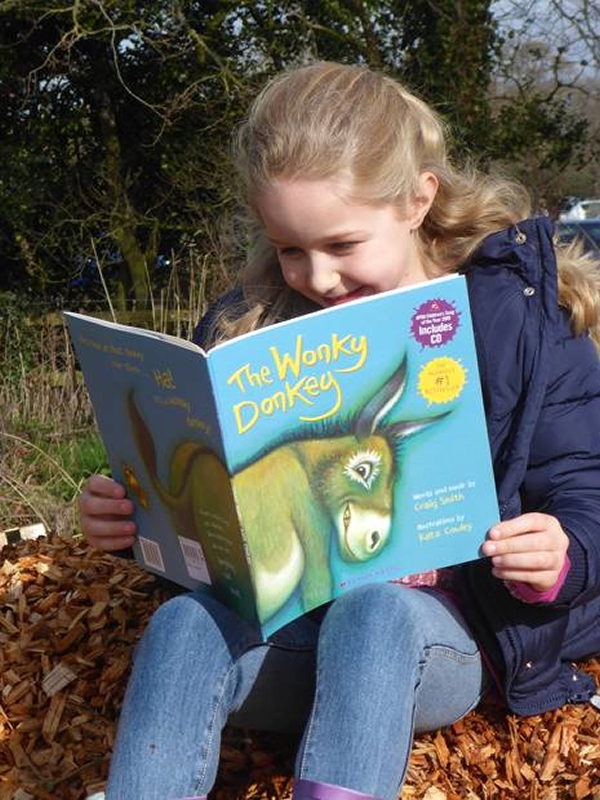
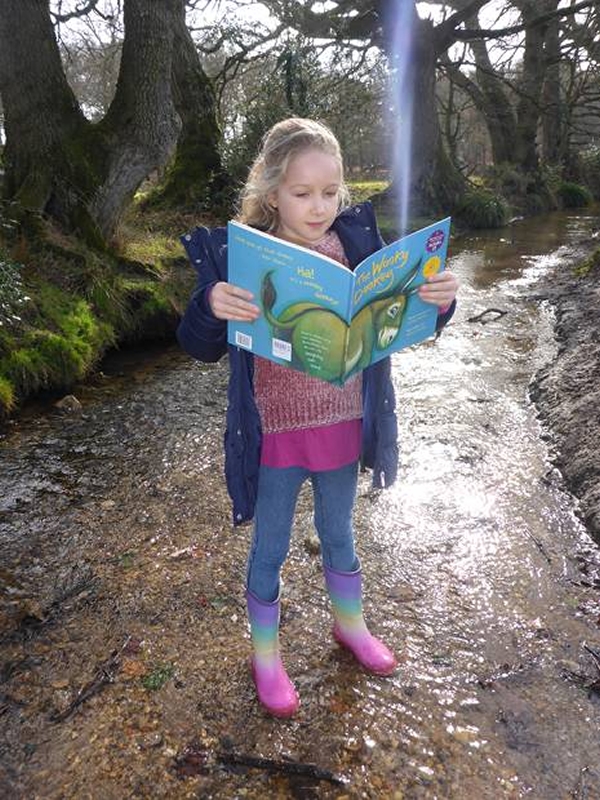
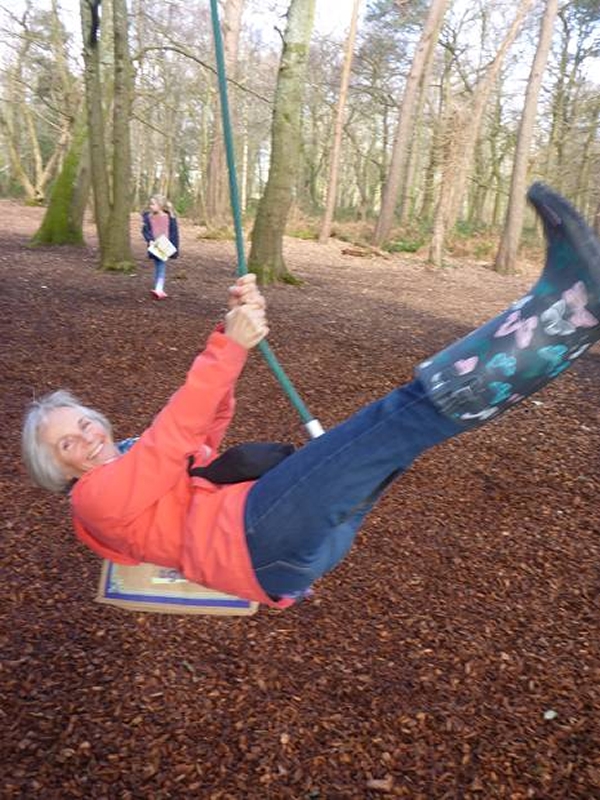
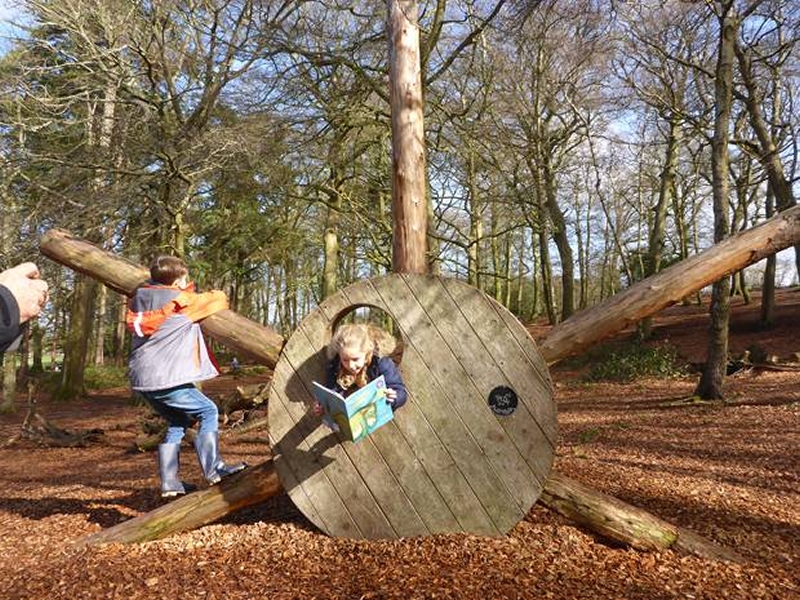
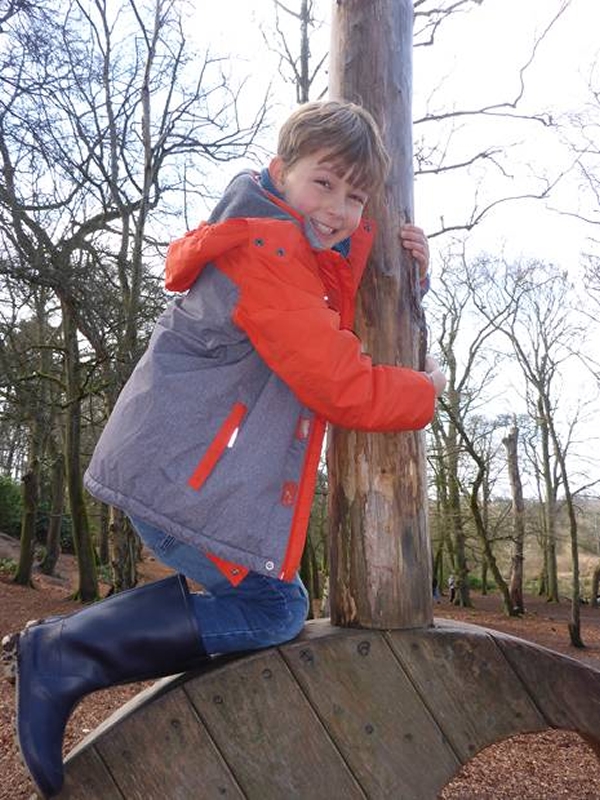
Then there was the school book day when the children could go to school dressed as a character from a book they had read. Ruby went as a Victorian street urchin and Henry, well as you can see he had the confidence to borrow a dress and cardigan from his younger sister to play the role of The Boy in a Dress by David Walliams.
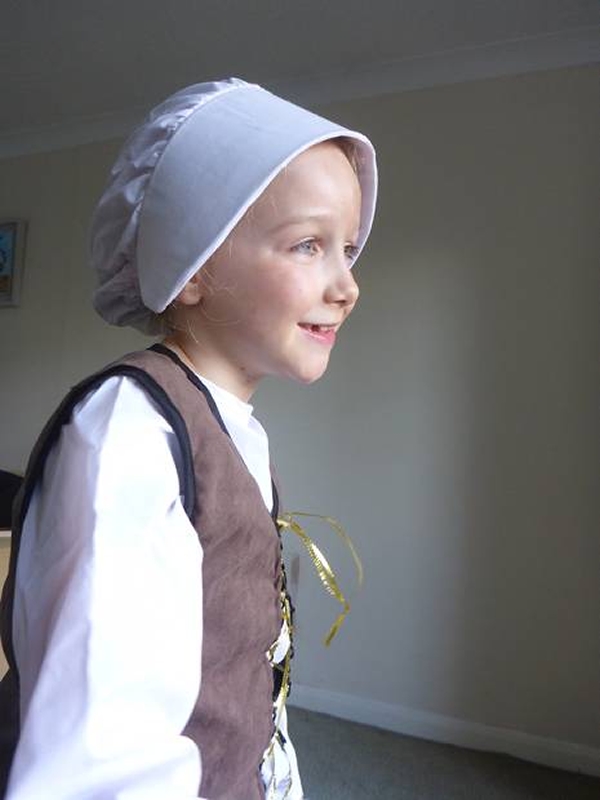
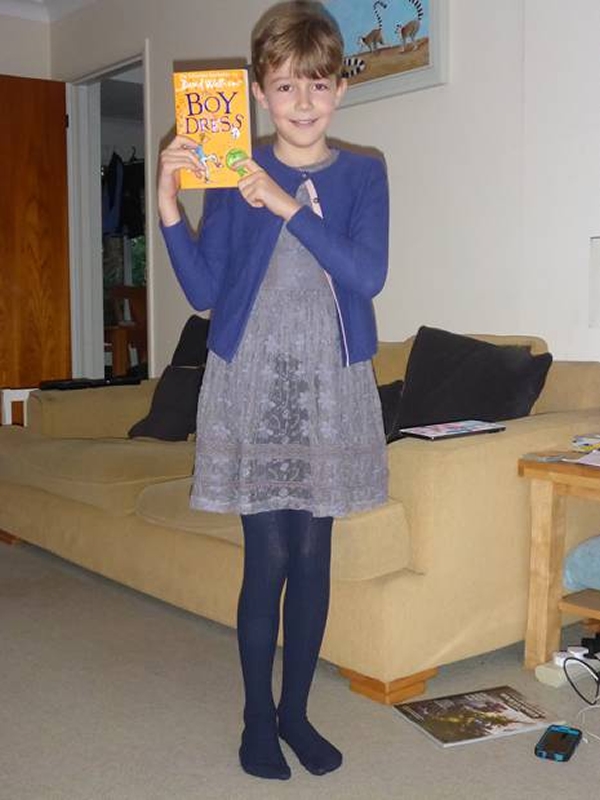
As a grand finale Ruby’s well developed sense of drama was put to use as Olivia, the heartless matron of Oliver Twist’s children’s workhouse in the book by an old English favourite, Charles Dickens in a school play. Talking of play, next on the list was a trip to the Winchester Science Centre while Gary and Emily were having a London weekend with Dawn, Gary’s sister.
Biking Rewards and Grandad ignites a Chocolate Bomb
I was rising early in the mornings to write the blog while sitting in the living room. First down after me would be Henry who covered himself over with a soft throw and played videos and games on his phone. Then Ruby would arrive and my writing would be interspersed with short conversations that would go something like this, “Will you show me how to find your blog Granny so I can read it please?” A short instruction on the quickest way to the site followed and then one morning, “So Granny I will be able to show this to my children and grand-children won’t I!” That was music to my ears as enabling our descendants to learn about us and the world we are living in through the blog is one of the main reasons I am writing it.
We all know, don’t we, how busy our nation was in the Industrial Revolution of Victorian times and how for over a century railways transformed the lives of people on 6000 miles of direct and pot hole free travel by 1850. Just before I was born farmers living near Robin’s farm in Ashwater could send their produce off to London and would once or twice a year go along themselves for a day out. That all changed for the small rural lines in the 1960’s when a wily government realised much more revenue could be made from ownership of a vehicle than purchase of a single train ticket but the legacy of trackless trailways now helps to keep the nation healthy and relaxed.
Castlemaine Trailway stretches for 16 miles (26km) from Ringwood to Poole but we went on the cyclable section from Broadstone to the Willets Pub to enable Henry and Ruby to practice their bike riding skills. The golf course runs down the left hand side and the occasional click of metal on ball accompanied the abundant wild birdsong and the chatter and happy sounds of people relaxing away from home and traffic.
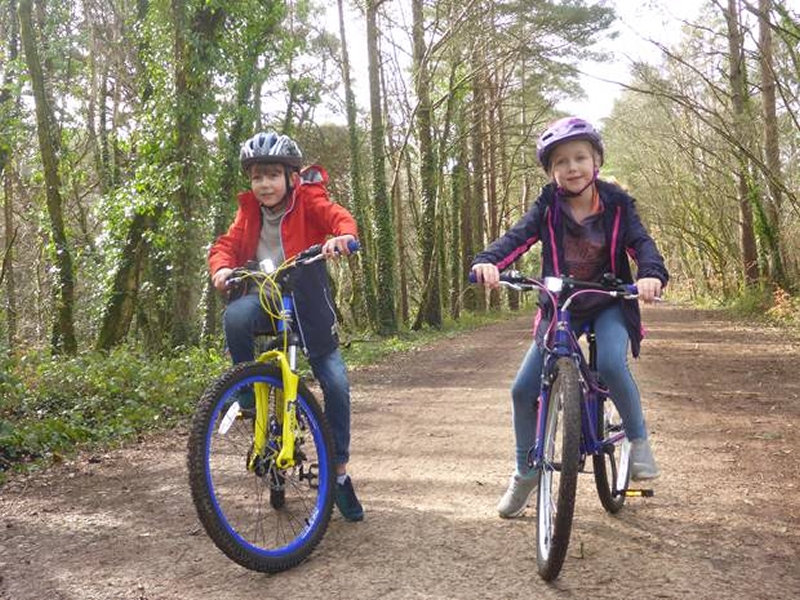
We were all genuinely hungry by the time we reached the pub and after a tasty grilled halloumi salad I watched with the rest of the family as our lady waitress poured hot chocolate sauce over Rob’s chocolate bomb. A dramatic end to a lovely family lunch.
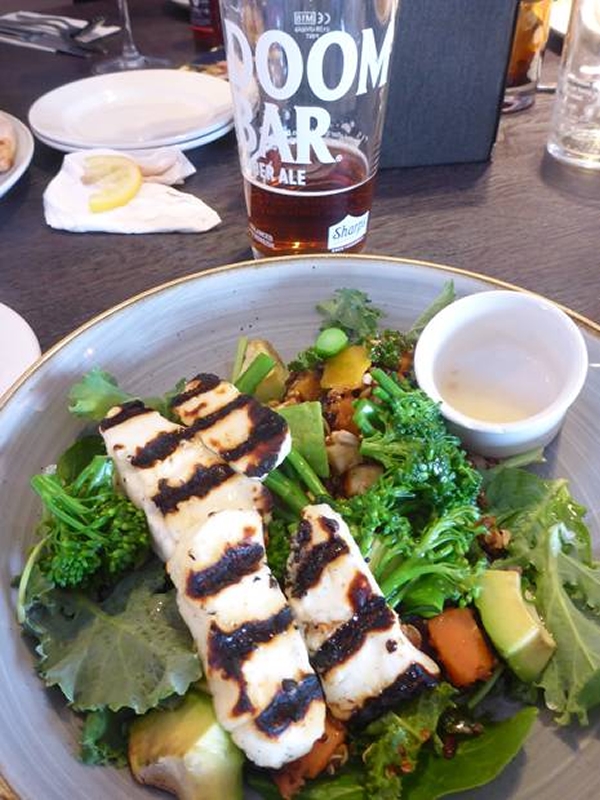
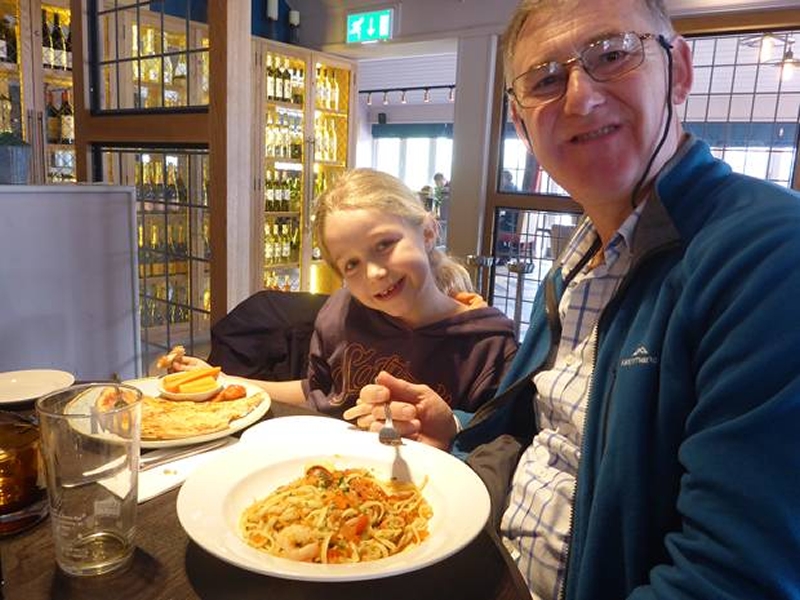
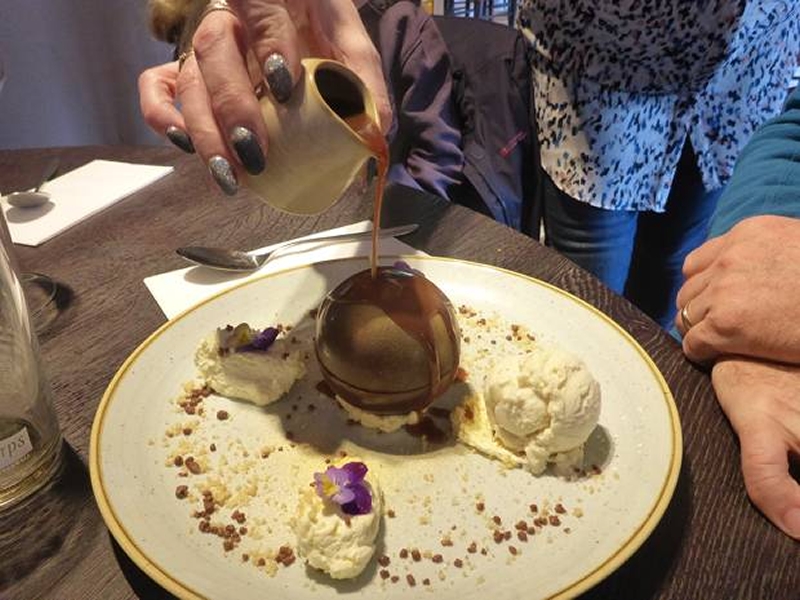
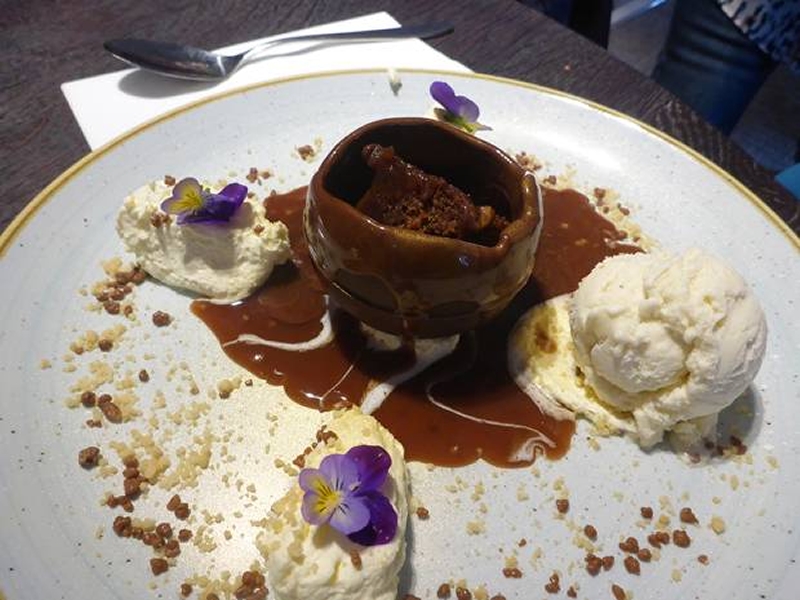
Rob and I were let loose with the children for the weekend and as Saturday was to be a very rainy day we went off for some scientific and less scientific fun in the vast play area for 3 to 93 year olds at the Winchester Science Museum. Moving on from the endless fascination bubbles have on all ages Ruby discovered just what it was like to move around in a wheelchair, nursing a basketball and negotiating a track towards the net and back against the clock and they both found an interesting machine that records the height of a child’s jump and from the results estimates their running speed. They both then moved to the running track and raced against the clock just beating the estimates on two of their three runs. For the health of the nation every play area should have one, they loved the element of self-improvement, breaking their own records.
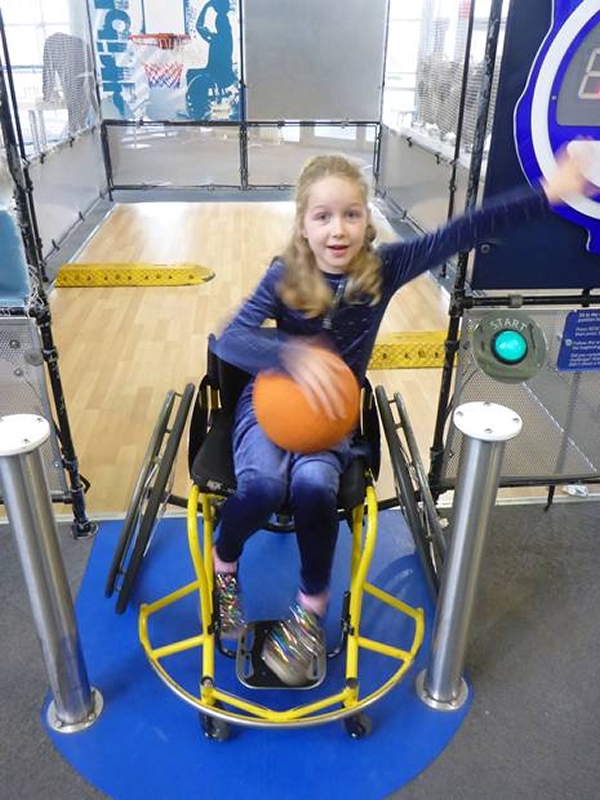
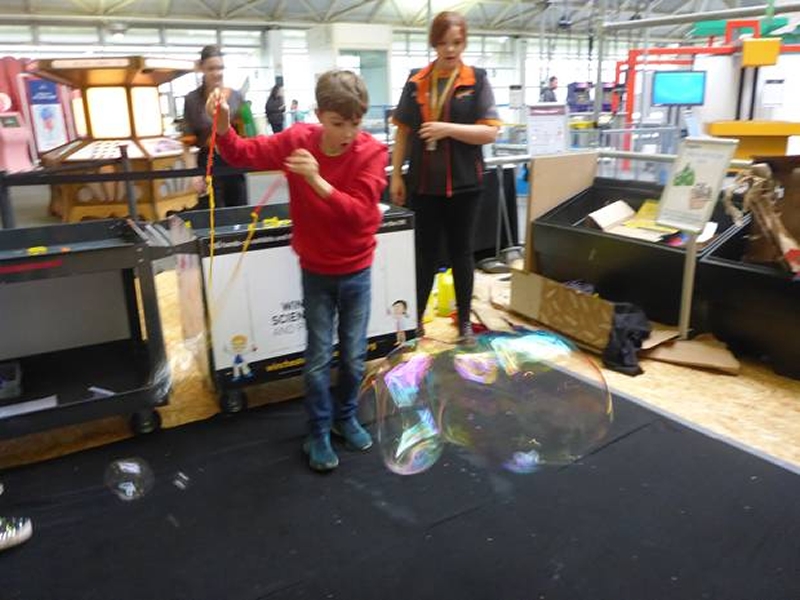
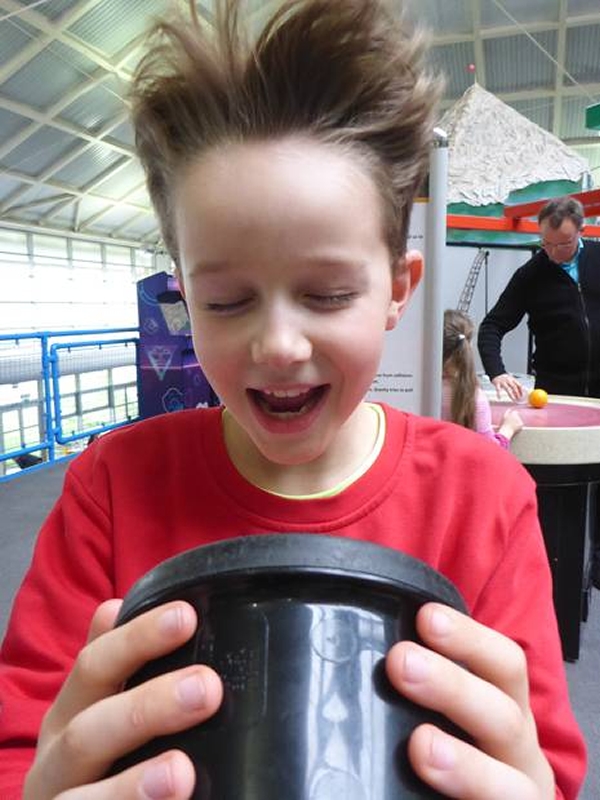
Back in Oakham, having completed our medicals for our Australian Visas in a Sutton Coldfield private hospital we prepared for our next great adventure, Scotland avec famille!
Scotland for the Brave
The day dawned bright and mild on the 16th of March 2019 when four cars belonging to the Bent and White related families set off northwards from Oakham. Christine, Robert’s first wife and mother of their three children, Richard the eldest, then Charly their daughter and finally Jonty who could not make the trip, was accompanied by her partner Graham in his car. Richard came along with Julianna and their two children Rupert and George and Charly with her hubby Tom and young Milo on his first holiday at age four and a half months. Oh and Rob and me in Charly’s car.
There was a strong SW wind blowing us on our way up the A1, a broad reach in sailing terms which became a beam reach as we turned across the Pennines on the A66 after a snack together at the Scotch Corner Services. There was lots of surface water around after heavy rains. Raging brown streams and rivers, flooded fields, waterfalls and sheltering flocks of sheep tucked behind stone walls that had withstood the wind for centuries in high, marshy fields.
Almost tree-less moors. Thick stone-walled farm houses withstanding whatever weather is blasted their way. High sided vehicles swerving across lanes, imagine if one carrying eggs were to be blown over.
Ruined red Brougham Castle, red earth, red rivers, red bricks, red rock. Open cast coal slag heaps reminded me of the 1966 Aberfan school disaster when a water-logged slag heap slid over a primary school wiping out a generation and its teachers. The temperature was dropping too, from double figures to 7’. Tall chimneyed crofts just visible through the misty rain. At Annan we were sent on a diversion away from a flooded road. More swollen rivers topped with piles of natural foam, ‘The Water of Ken’, dam, dam and another dam creating power and fed with bubbling burns. A tower house from the sixteenth century stood like a bastion on the high moor, surrounded by plantations of pine, forestry on what was poor farming land fit only for sheep and a few hardy cattle. 3’ and dropping.
The rain is horizontal now and the sheep shiver in the bleak bleakness. Craig Malloch is hidden in the rain and comical belted Galloway cattle with their pure white waistbands are untroubled by the conditions. Granite quarries have obviously brought some wealth to the area. Around a double bend we find a farmer who loves tractors, there must have been at least 100 parked all around his farmhouse.
Soon we are watching the England v Scotland Rugby Game in our cosy lodge. What a match, records were broken, the 38-38 score was the highest scoring draw in International Rugby history and the highest score in the first half of the Calcutta Cup. The crowd never stopped cheering from start to finish and neither did we. The playing momentum remained at fever pitch throughout. It was great rugby.
Next day we started exploring. This part of the west Ayrshire coast languishes in the Gulf Stream which brings mild winds northwards and rarely sees snow except on the high hills of Arran we noticed as we gazed out to sea and saw Paul and Linda McCartneys’ Mull of Kintyre faint behind Arran and Ailsa Craig Island a little to the south with its precious Puffin colony.
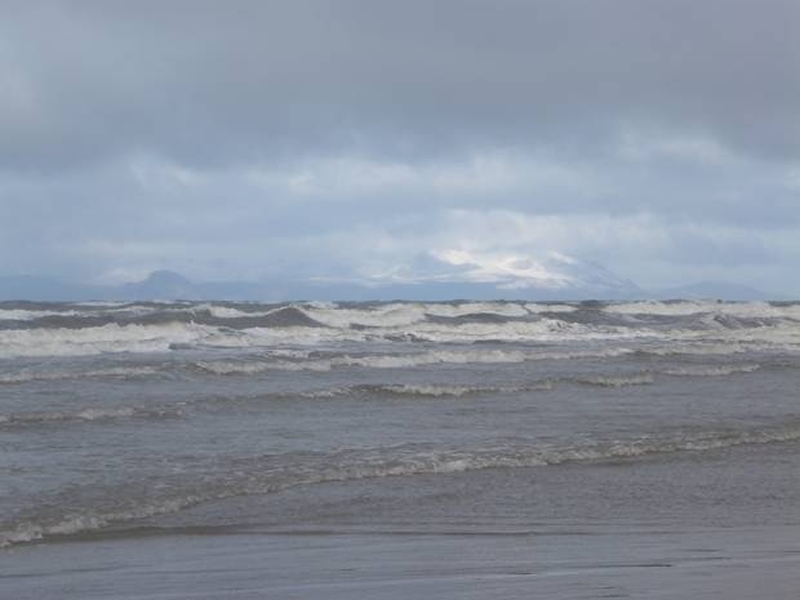
We drove back to the lodges past disused airstrips dating back to both World Wars and Trump Turnberry, the Station Hotel, Golf Course and Stevenson Lighthouse bought by the Trump Corporation in the 1990’s and used as a money laundering base according to Eric Trump, who now denies it. More about that place later.
Our lodges were amongst nearly one hundred built, along with a now disused golf course, in the grounds of the 16th century Brunston Castle, an L shaped tower house on the banks of the River Girvan, rendered even more of a ruin when marines motored up river from their base in Girvan for some pointless target practice.
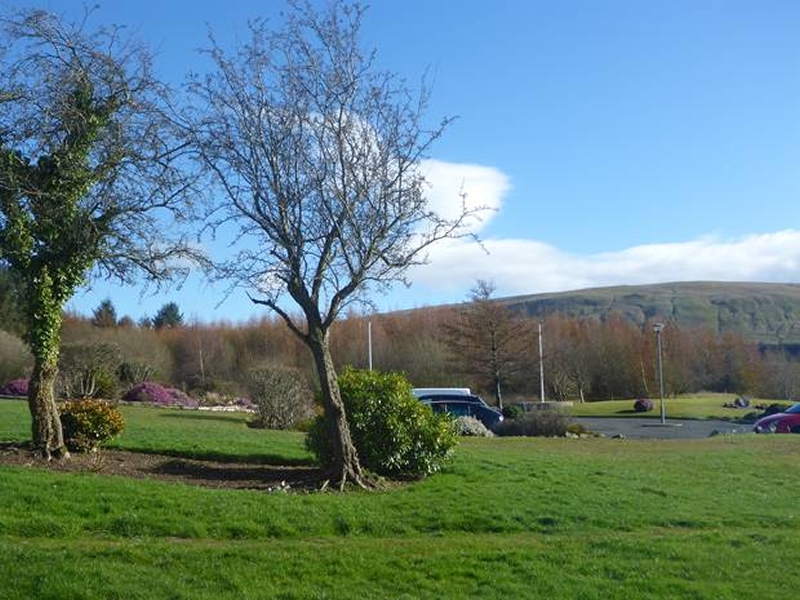
The swimming pool, coffee shop, lounge and offices were housed in a modern building just a few moments’ walk away and we had the lovely pool to ourselves a number of times with Rupert and George quickly gaining confidence in the water. The sweltering sauna was a rare luxury too.
Early one morning I read the Scottish bard Robby Burn’s epic poem ‘Tam o Shanter’ to my Robby just to start an appetite for the local culture. Then Richard, Rob, Rupert and I went for a walk to the three bears’ wood, followed by a circuit of quarry wood along the old narrow railway line past lots of falling and felled trees.
By the time we returned to base the family was ready to go and explore the harbour and town of Girvan.
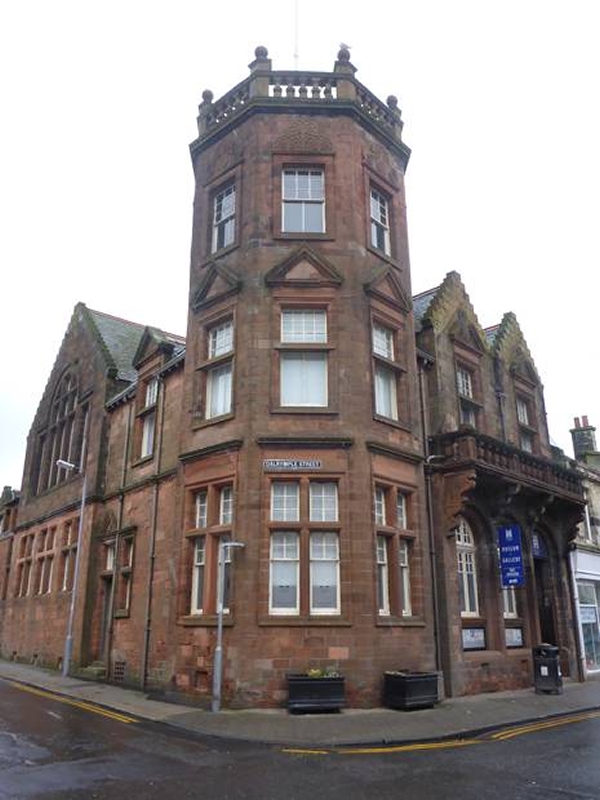
Built at the mouth of the River Girvan the harbour is still home to the fishing fleet and the offshore lifeboat. With the arrival of the railway came seaside holiday makers of which we saw none of course, it being March. Judging from the fine old buildings and high proportion of empty shops Girvan is suffering a decline in its fortunes, but local industry, in the form of a whisky and gin distillery and Nestle factory which sends chocolate to York to make KitKats and Yorkie bars to name but two is helping to sustain the economy during the hard times. The town rested quietly waiting for the coming summer season to bring its mixed fortunes.
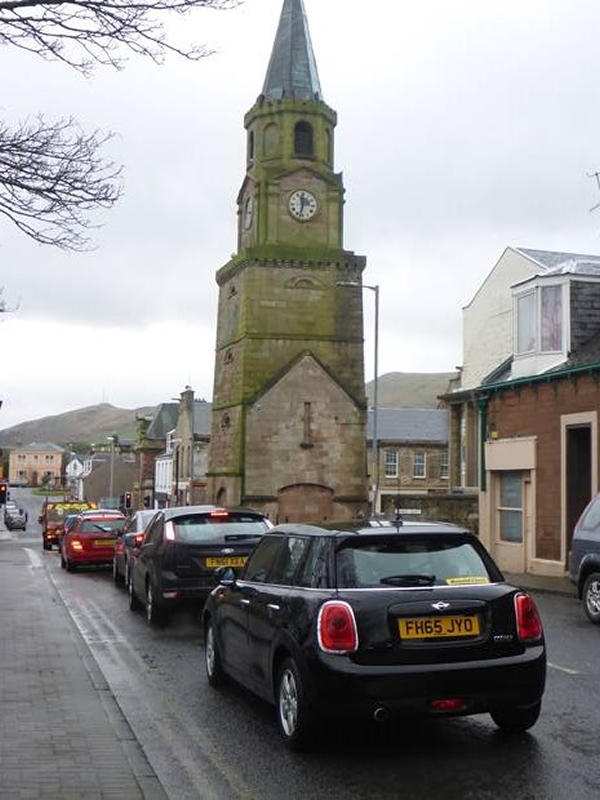
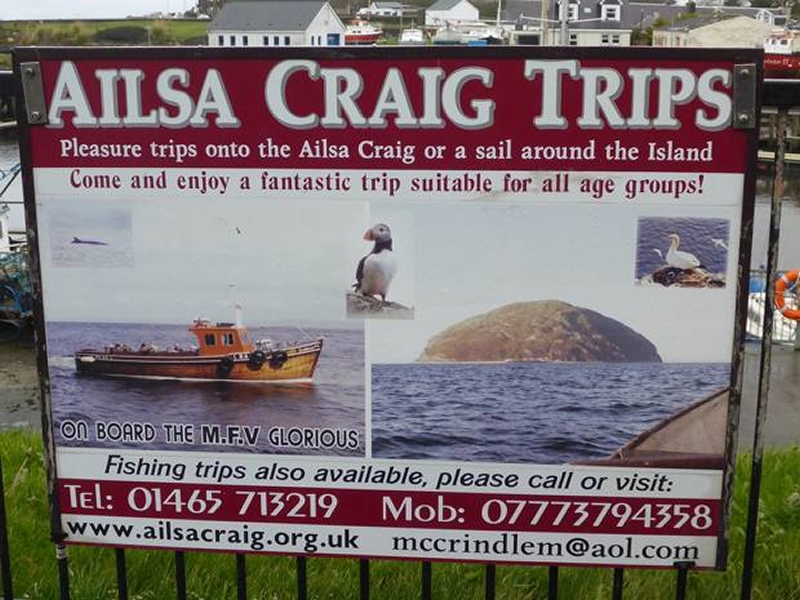
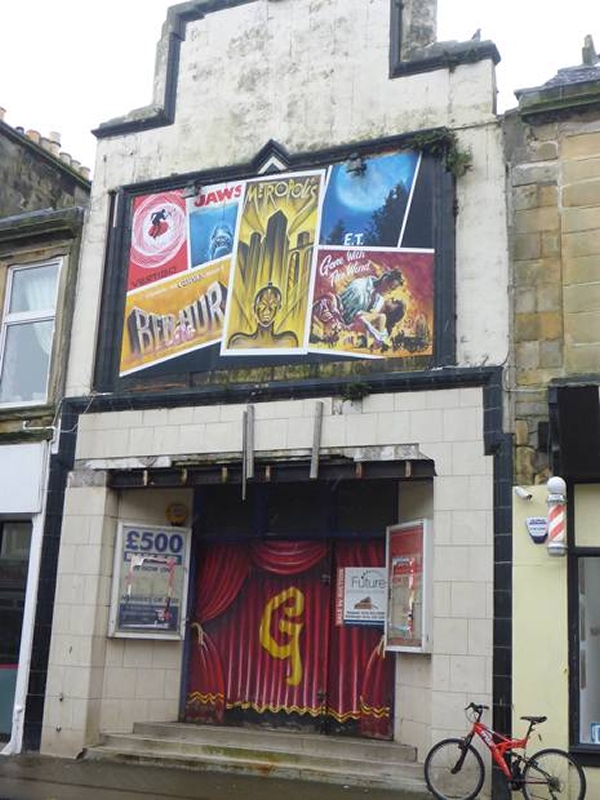
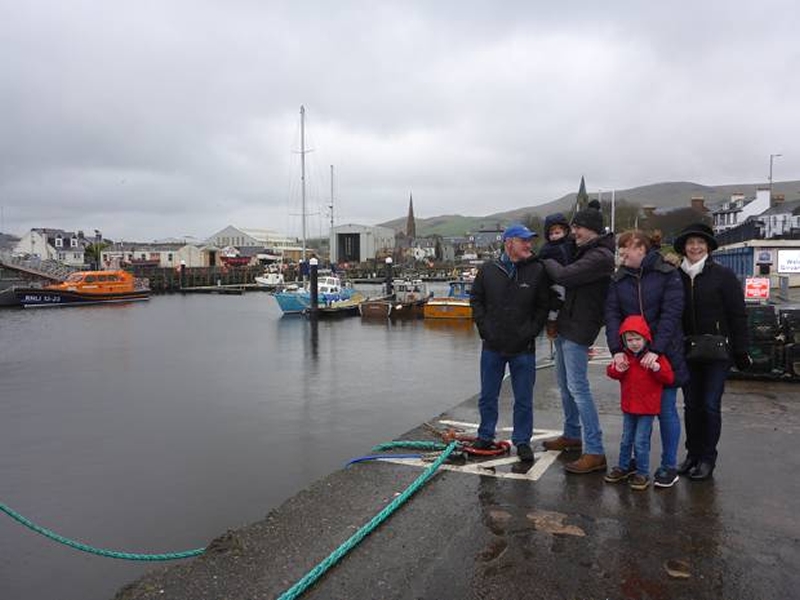
Dunure – A Harbour with Many Faces
Dunure Harbour easily fills the requirements of a romantic mind. Named after the yewtree (dun ure), nature started by making a good job of the shallow basin and rocky sided entrance channel which provided man with a sound base for the harbour wall. Even in the worst storms fishermen watched from their cottages as their fragile boats sheltered often intact in the face of the tempest.
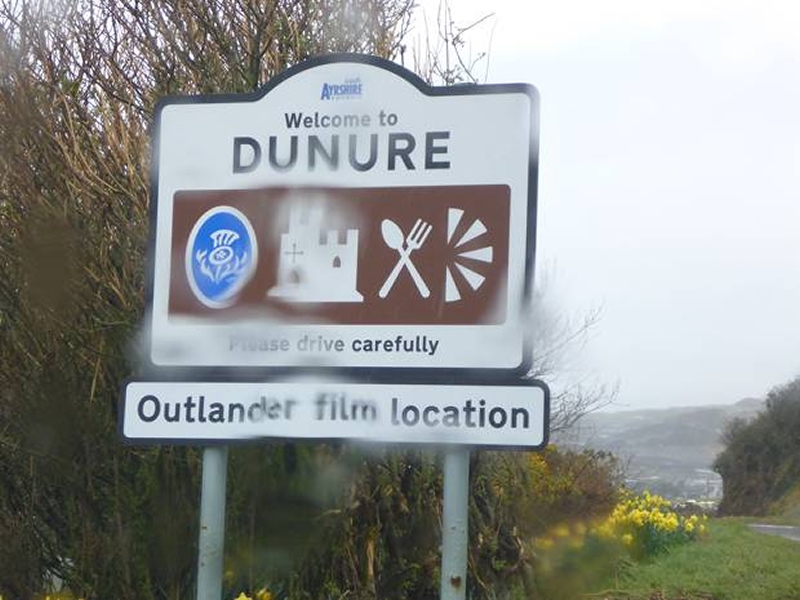
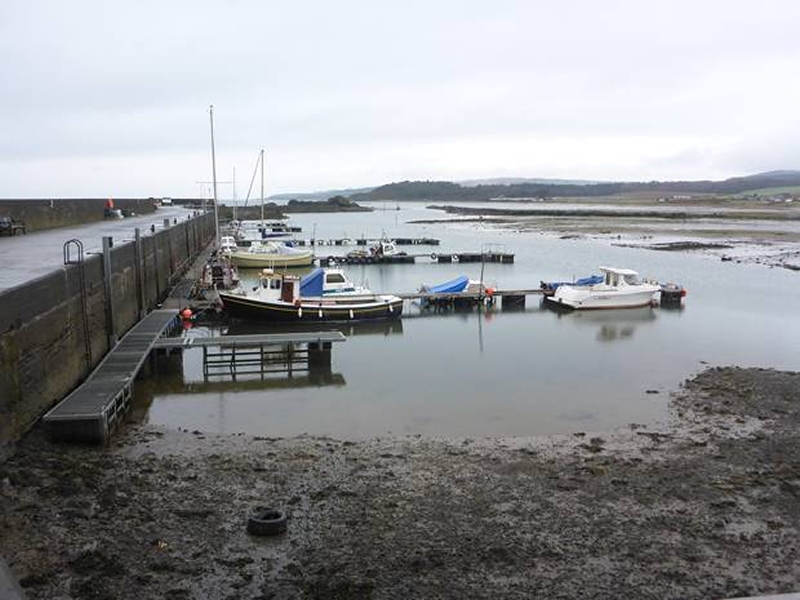
Both of Scotland’s famous Robbies, Robert the Bruce, the king in waiting climbed up the beach from across the waters and Robbie Burns the bard galloped in on his Meg, to say nothing of Charles Rennie Mackintosh the architect, painter and designer from Glasgow who came by train down the tracks; all knew and loved the place well because Dunure is where man works hand and heart with mother nature to create this rugged haven.
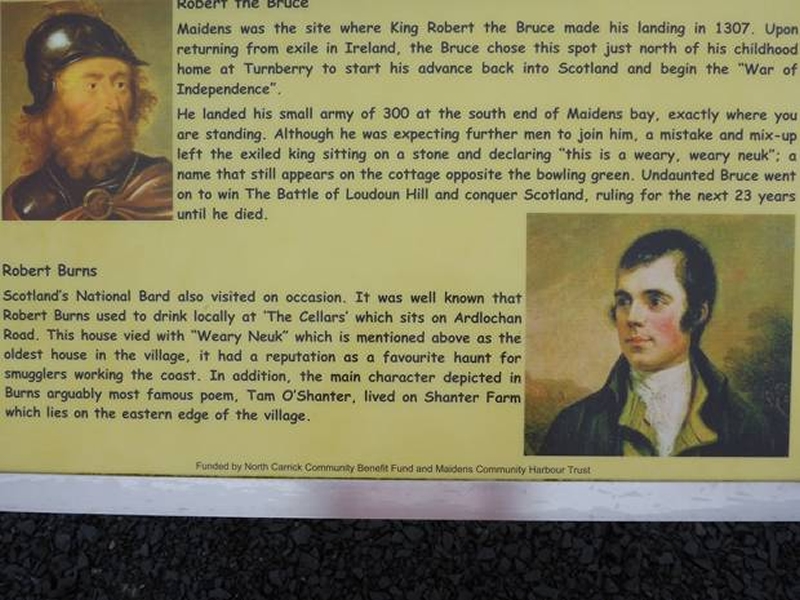
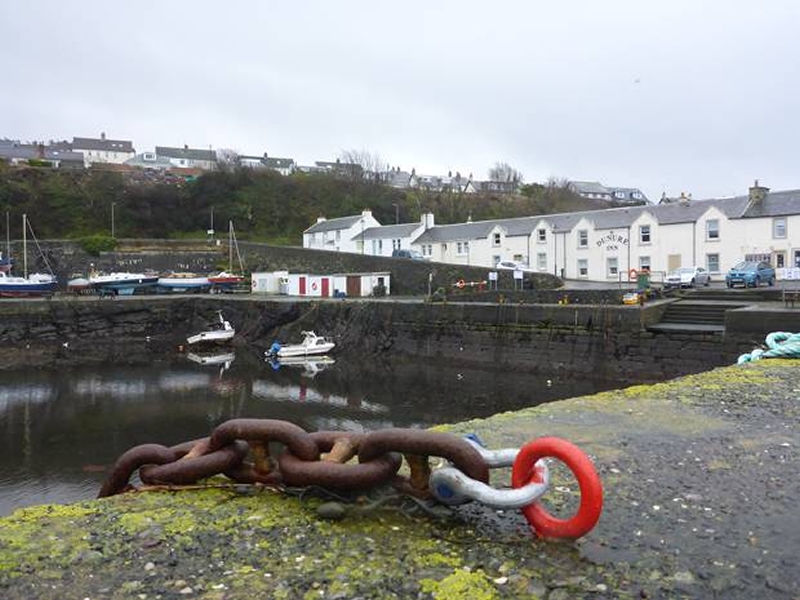
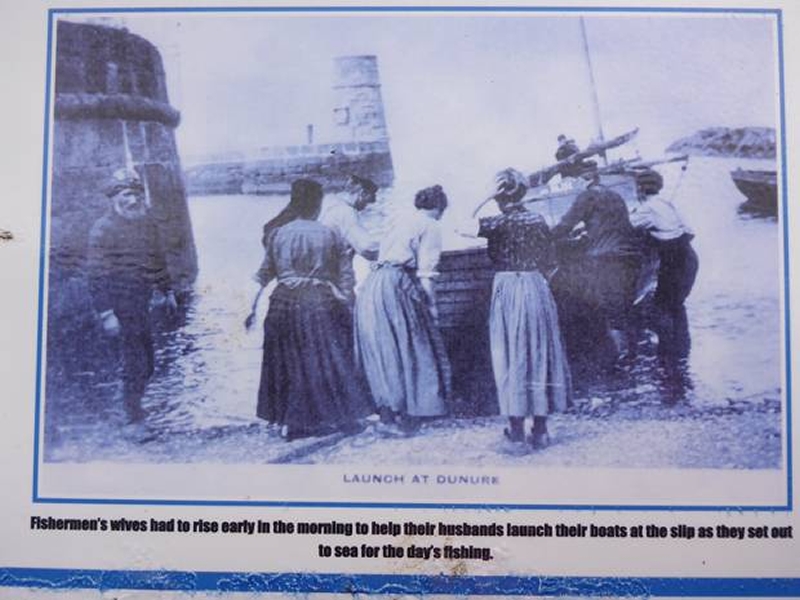
In our modern times travellers and film makers also appreciate the perpetual energy of the place, steeped in the rich history of Scotland Dunure now has a permanent place on our viewing screens. You may remember I have before mentioned the story created by Diana Gabaldon in her ‘Outlander’ books about her heroes, Clare and Jamie which are well worth the lengthy read. Well they are now being serialised and in the screen version Dunure appears dressed in various costumes as a Scottish, a French and an American port and I look forward to seeing them myself someday.
But for us on this day the skies were grey and the air cool and wet which just added to the atmosphere. On the quay, on white boards there is a long poem written by the local vicar about the bravery of Dunure’s own heroes in rescuing passengers and crew from shipwrecks, with just a handful of unfortunate ones lost and the majority brought safely ashore from the wave battered rocks where just a little further up or down the coast they would all have surely been doomed. Other Mariners were not so fortunate.
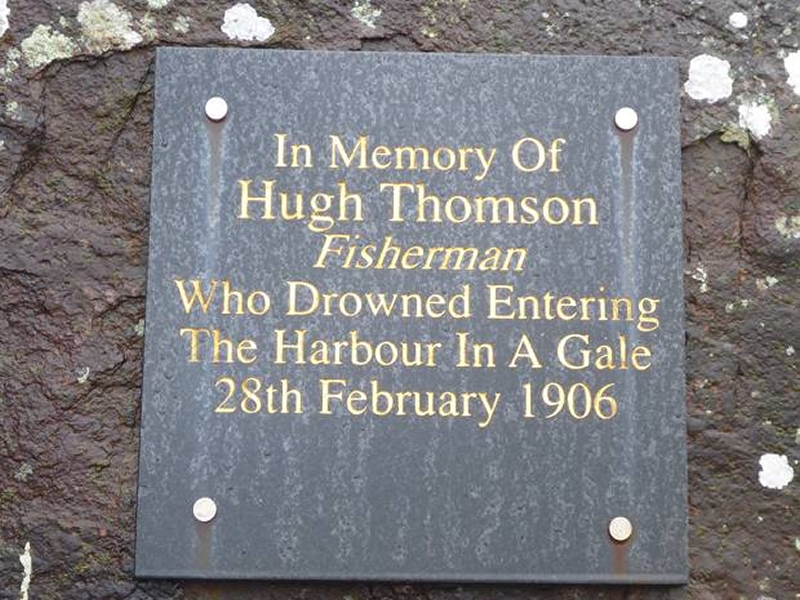
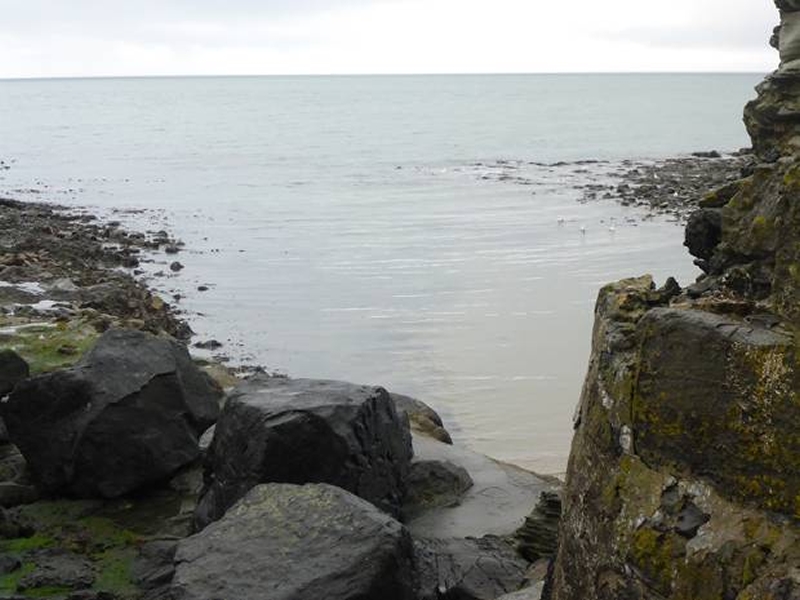

The White Walls and Black History of Dunure Castle
There is also the sad tale of a young lad, Sir Ewart de Gaire who lived in the castle with his mother and understandably in his sheltered life longed for just one thing, a wife. One night as he walked on the rocks he saw a beautiful mermaid infront of him and of course they fell in love. Together they experienced the underwater heaven that was her home but came back to his mom in the castle to have their child. At the baptism, as soon as the priest, the Abbot of Crossraguel Abbey anointed the child’s head with water both baby and mother exploded in a cloud of blue vapour and disappeared forever.
So saddened was Sir Ewart he left the country for good, possibly to Gaire in northern France if there was such a place. He lived during the reign of Alexander III in the 13th century at a time of the Viking invasion from Norway so maybe that scenario leading to the final defeat of the Vikings at the Battle of Largs in 1263 set the seeds for the love story.
In the dark light of night could a long blonde haired Viking in his shiny ‘tail’ of armour clamouring over the rocky shore from his longship be the inspiration for the story and the explosion of mother and child a metaphore for the outcome of the battle? With the story writer’s hand gripping reality there was no happy ending there.
As indeed there wasn’t for the castle, now a jumble of semi-restored rocks. But picture this. Looking at the photo of the castle from the beach, in your mind’s eye elevate the walls to six stories of accommodation built of hard locally quarried whinstone with softer sandstone for the more intricate parts, add a chapel to the left hand side and numerous roofed buildings within the substantial walls, render the outside of the castle walls with white lime plaster shining brilliant in the sun and making Dunure Castle visible for many miles in its elevated position. Light the numerous fires in their ten foot wide fireplaces and let them send columns of sweet scented woodsmoke upwards and fly colourful banners depicting the Kennedy coat of arms amongst them from tall flagpoles and you have an image of the castle dating back to medieval times. This is how the castles of Britain looked in their heyday.
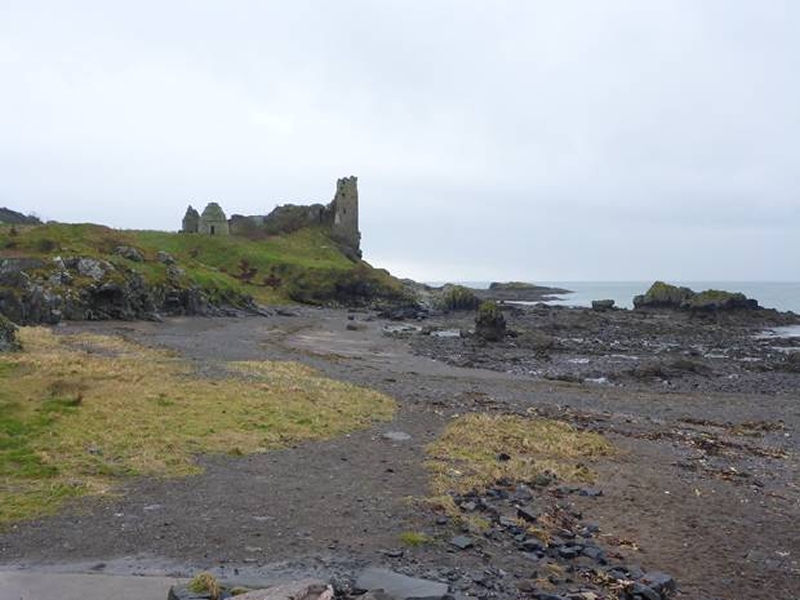
Ironic and tragic isn’t it then that the castle with its violent history crumbles while the 200 pigeon-holed beehive shaped doo cot (dove cot) sheltered the symbol of peace as she laid her eggs for the kitchen and is today one of the best preserved doo cots in Scotland. Peace reigns and the birds are still there!
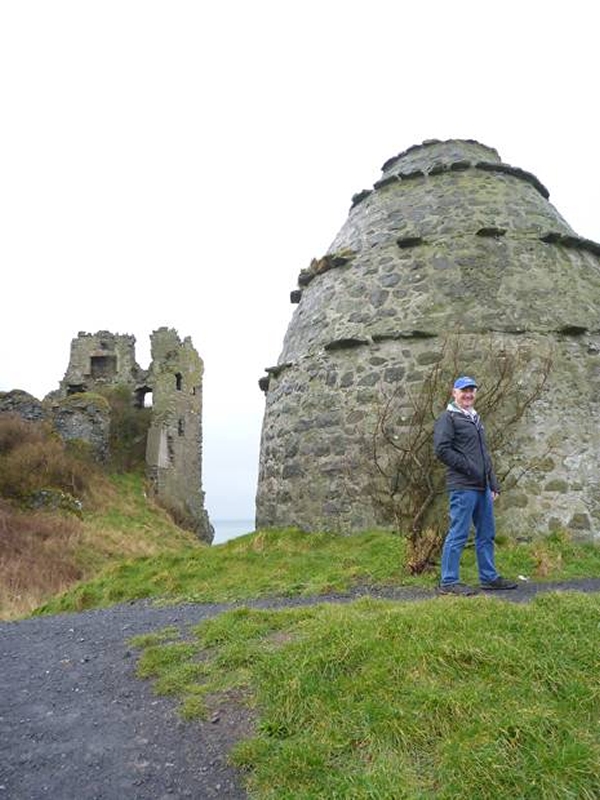
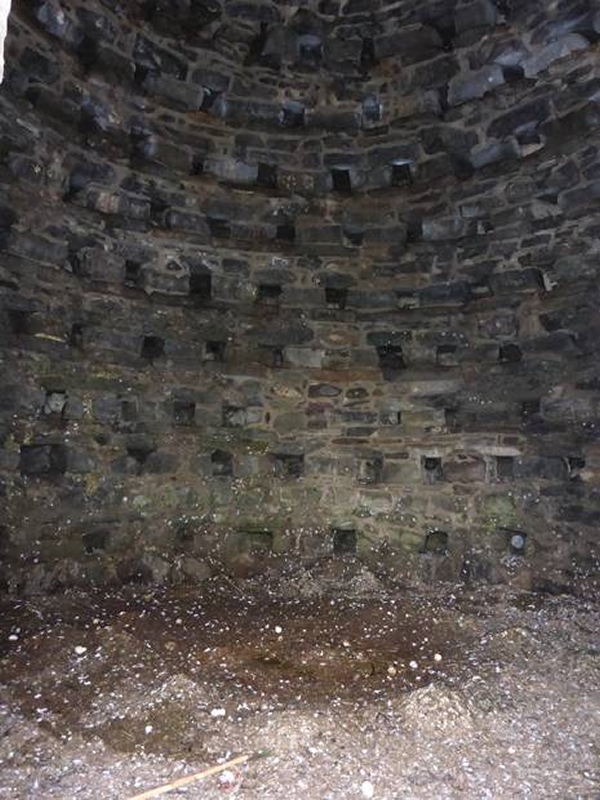
To be honest much of the castle’s disruption came as its perfectly shaped materials were taken and put to new use in the buildings, roads and lime kilns nearby.
The rule of the castle by the Kennedy Clan (Helmeted Clan Chief) from the thirteenth to the sixteenth century was at times a cruel one with Gilbert Kennedy the 4th Earl of Cassilis letting religious blood in his zeal for more land in the 16th century being the most marked.
A supporter of Queen Mary he entertained her for three days and nights at the castle on her royal tour in 1563 and at the age of 22 he fought in a battle on her behalf in the same year.
Two years later and eager to ‘reign’ over yet more Abbey lands (he was known as the King of Cassilis for his feudal mentality) he was almost through successful negotiations with the Abbot to the point of signatures when the abbot sadly died, sadly that is for Gilbert, the Abbot and for Stewart the Commendator of Crossraguel Abbey whom Gilbert promptly imprisoned.
Prepare yourselves for something hideous. Gilbert forced Stewart to forge the signatures of everyone in the convent on the deed of sale by roasting him alive twice in the fireplace you can see in the picture until he had completed the task. To cover his tracks Ghastly Gilbert then had Stewart assassinated and as a final act to complete the conquest the assassin himself was disposed of.
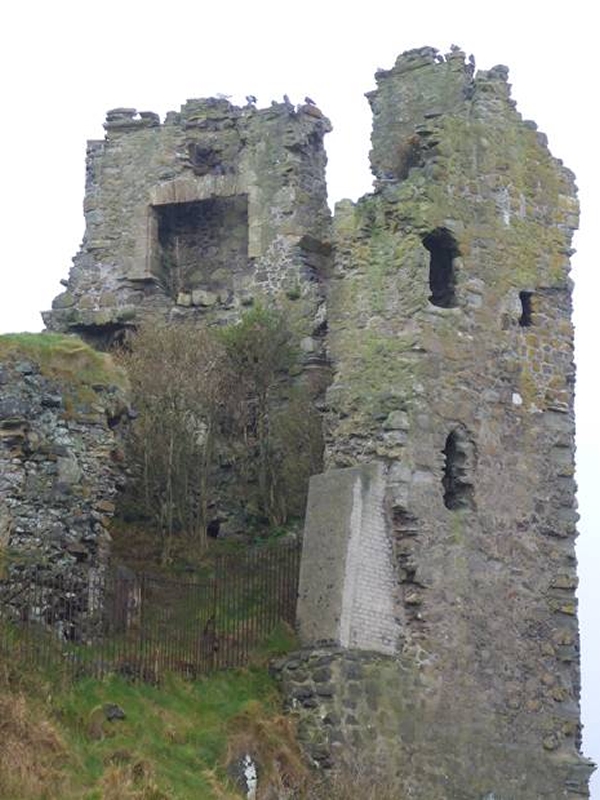
A decade later he married and his wife had two sons but divine justice was on its way and in the year of his second son’s birth, 1576, he fell from his horse and lived no more.
Unsurprisingly a song blossomed out of his notoriety;
Twixt Wigtown and the Town of Ayr
Portpatrick and the Cruives of Cree
No man need think to bide there
Unless he court with Kennedy
(Cruives -fishtraps on the River Cree)
After all that history and culture we were famished so the remaining four of us, Christine, Graham, Rob and I went back to our respective lodges and after a quick brush up drove to the Wildings Restaurant just down the road from Dunure and only half an hour from home.
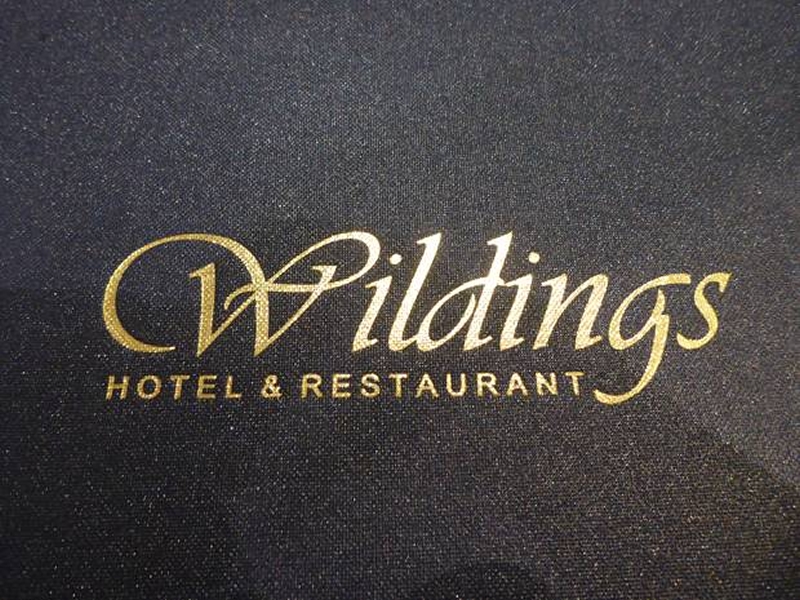
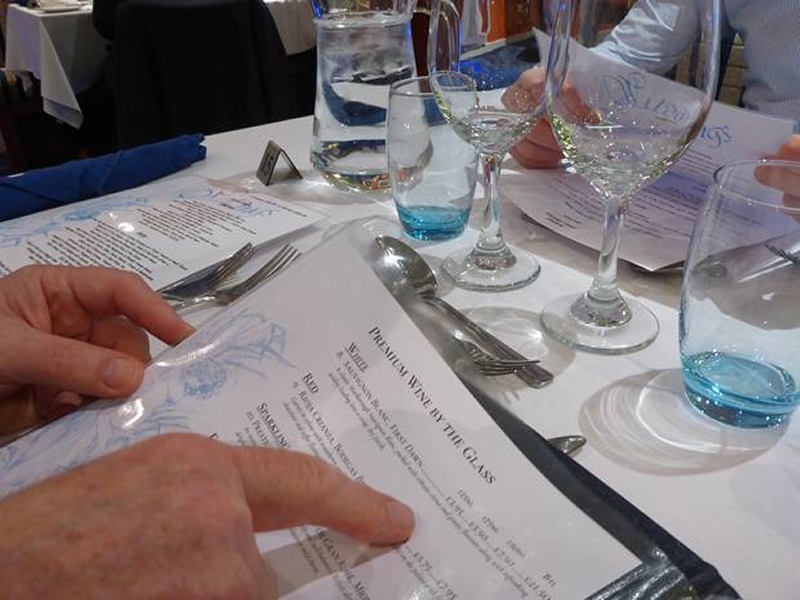
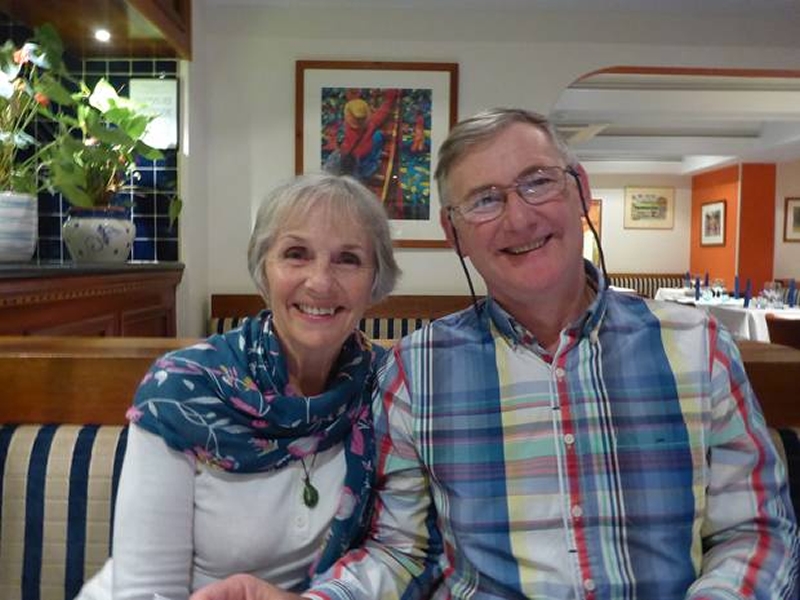
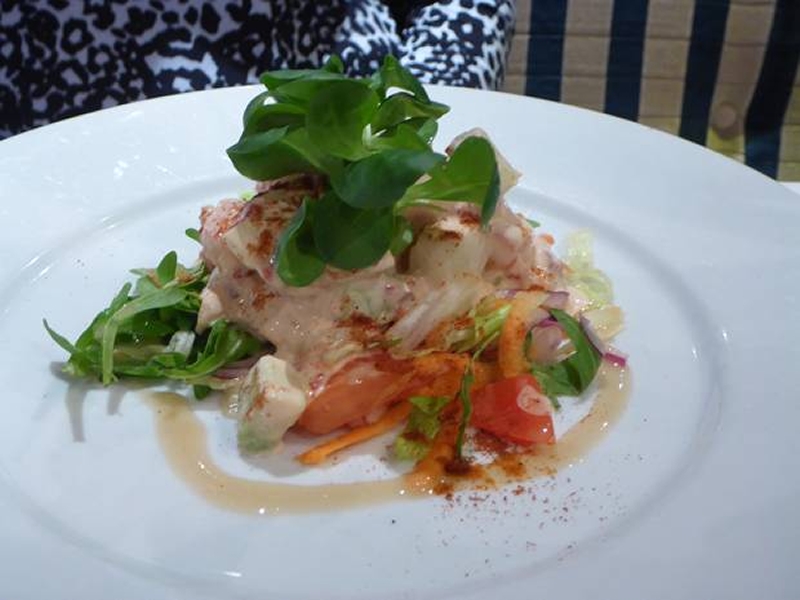
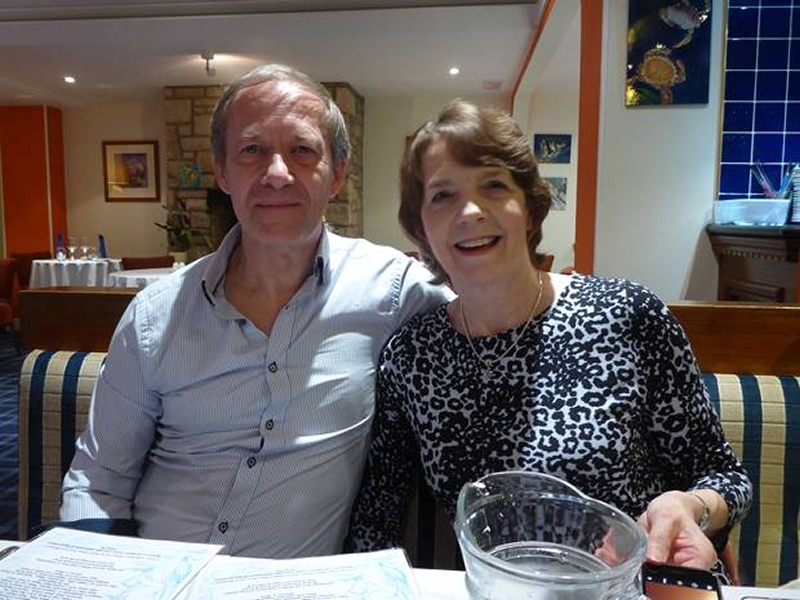
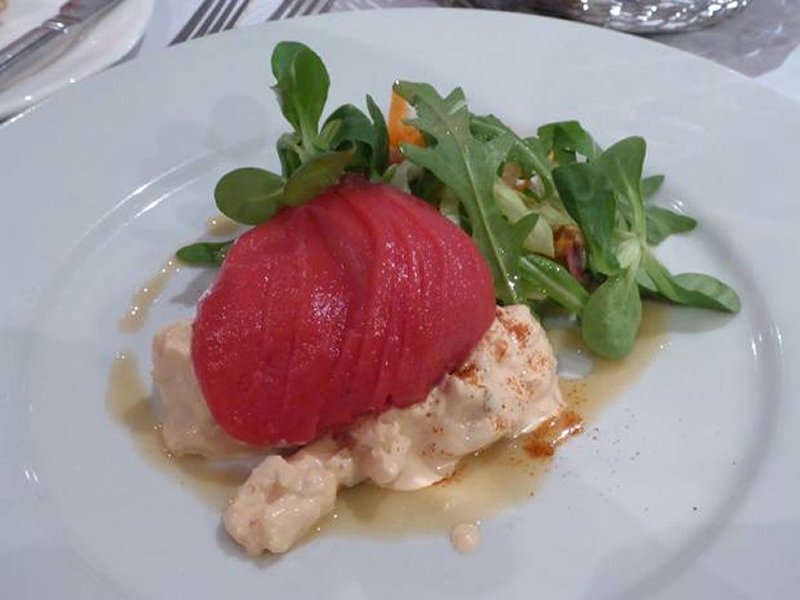
The unassuming exterior of the restaurant and the beautifully decorated and colourful interior were in stark contrast to the rugged, remote and fabulous coastline of Ayrshire just outside the door.
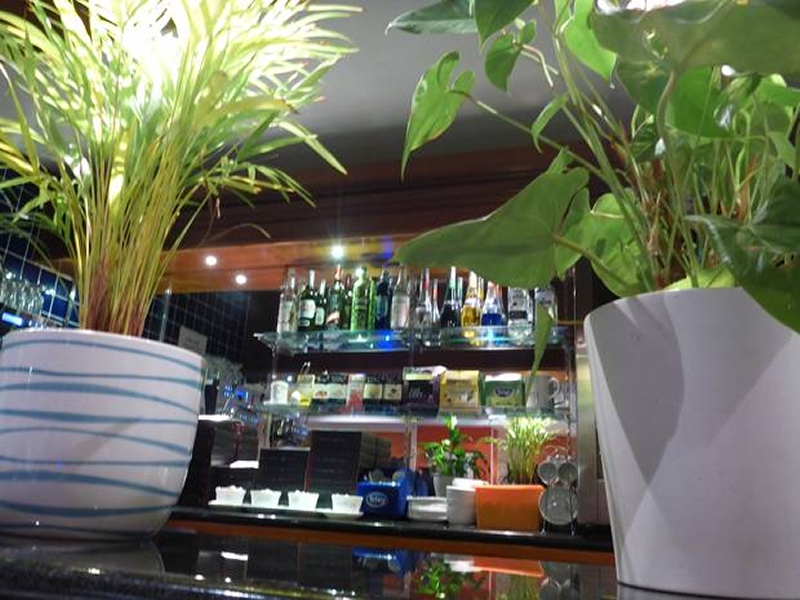
(Typing assisted by Ruby Wyatt)
A Ramble with Ron and what’s left of Brunston Castle
The sky was threatening rain as we waited for the time to meet Ron, an amiable local with lots of stories to tell. Chris and Graham and a lady from South Africa joined the pleasantly small group that followed Ron down onto the golf course.
Leaning on the bridge over the Girvan River and looking downstream Ron told us how the late Queen Mother would steal the odd week for some salmon fishing from a spot a few metres away. Apart from an attendant or two she was sometimes accompanied by a young local girl who was trained to assuage the Royal’s frustration at being unsuccessful in a unique way. If towards the end of the week the Queen Mother had still not caught anything at the given moment this young lady would advise, “Ma’am your gin and tonic is ready.”
In her absence a fine salmon caught out of sight downstream would be re-located to the end of Elizabeth Angela Marguerite Bowes-Lyon’s fishing line and she would go home satisfied.

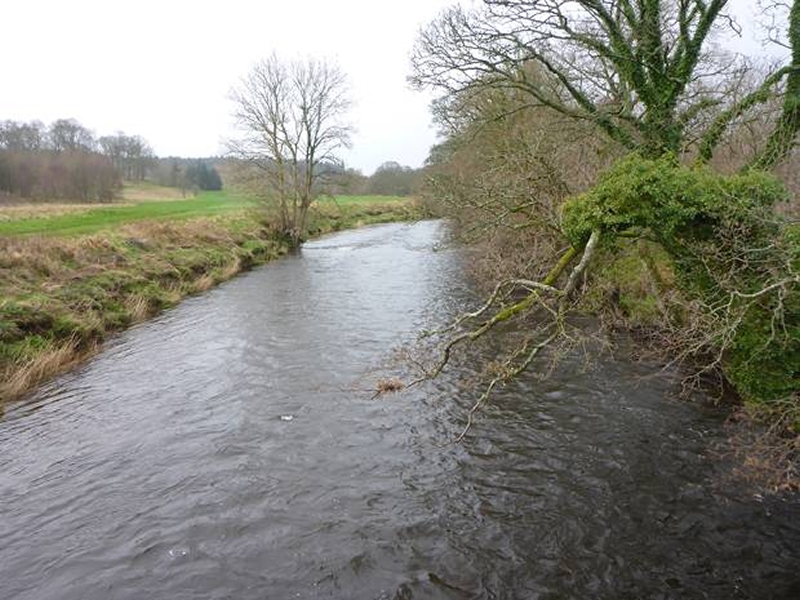
We soon joined the Glasgow-Stranraer Cart Horse road along which and on many other drovers’ roads seed potatoes would be transported to Ireland and yearling horses come back in return. Ayrshire is where MacAdam started his experiments with road surfaces resulting in the tarmacadam seal we see everywhere today. We found a pugmark which Ron confidently told us could have been made by the local black panther/puma.
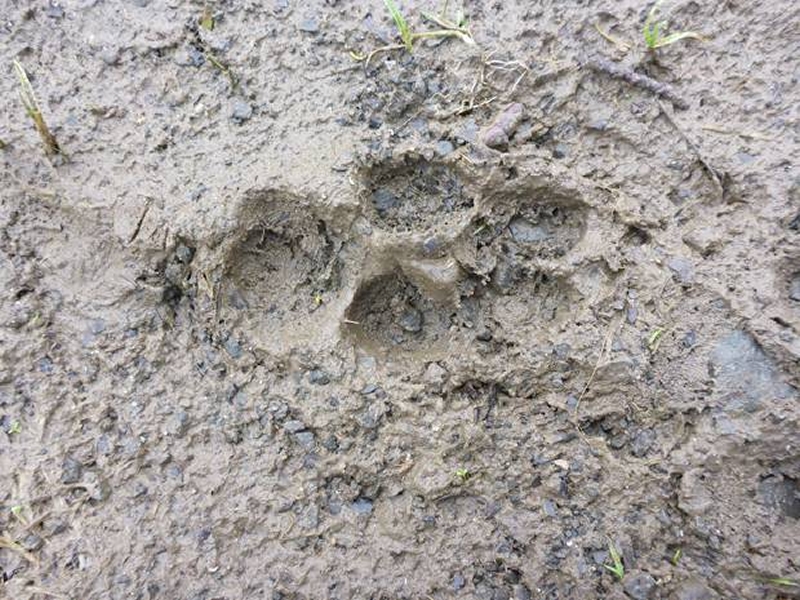
A few years back a panther frequented the nearby railway station where he/she and the station master became if not friends then respectful acquaintances. It would snooze between the tracks until it felt the vibration of a train, then roll clear until the noisy monster had passed and then roll back onto its stony mattress. The station master would feed it corned beef. Cushy life for a big cat.
By now light rain had started to moisten our skin. “It doesn’t rain in Scotland,” Ron exclaimed, “This is Scotch Mist.”
In days of old when knights were bold, back in the early 1300s in fact Robert the Bruce (19th great grandfather of our Queen) invented guerrilla tactics against the English soldiers to claim the throne for himself and the Scottish. Up on the hillside you see in the photos from our lodge he gathered together his small band of troops, mostly Irish loyalists and they collected a fine arsenal of rocks. Beneath them the unaware mounted soldiers were bombarded with the rocks rolling down on them, stressing the horses who stumbled and fell backwards into the river drowning their mounts. Cunning eh. Eventually, in 1306 he took the throne for 23 years before dying of suspected leprosy.
(As an aside I have to tell you that the male side of my family is descended from Henry de Bohun, ((Boon is the commonised (((my new word))) version of de Bohun)) and it was the death of Henry de Bohun, when Robert passed his sword through the former’s helmet with the desired result that sparked the start of the famous Battle of Bannockburn in Robbie’s quest for Scottish independence.) His troops won the battle while outnumbered two to one using sheer cunning by the way. They had previously dug holes all over the battlefield into which the English horses stumbled, shedding their mounts.
Ron went on to explain that now the golf course was closed there were plans to make the ponds bigger to attract more migrating birds and plant lots more trees. The history of golf in the area dates back to the fifteenth century when a law was passed that forbade the activity of golf to get in the way of archery practice. Was the punishment a hole in one?
I asked him about the felling of native forest we had seen happening all over the area and he said a private company had been given a 15 year licence to do just that and use the irreplaceable timber for paper making, wood pellets and wood chips for woodburners and animal bedding. Unbelievable and alarming.
We wandered into a little copse and as the Scotch Mist dripped off our noses Ron explained the three different types of lichen growing on a single tree that showed how pure the air is in Scotland. Lichen that lies flat on the branch, lichen that mounds up and lichen that looks like mini trees. That’s all I can remember and it’s all the same to the deer who eat it.
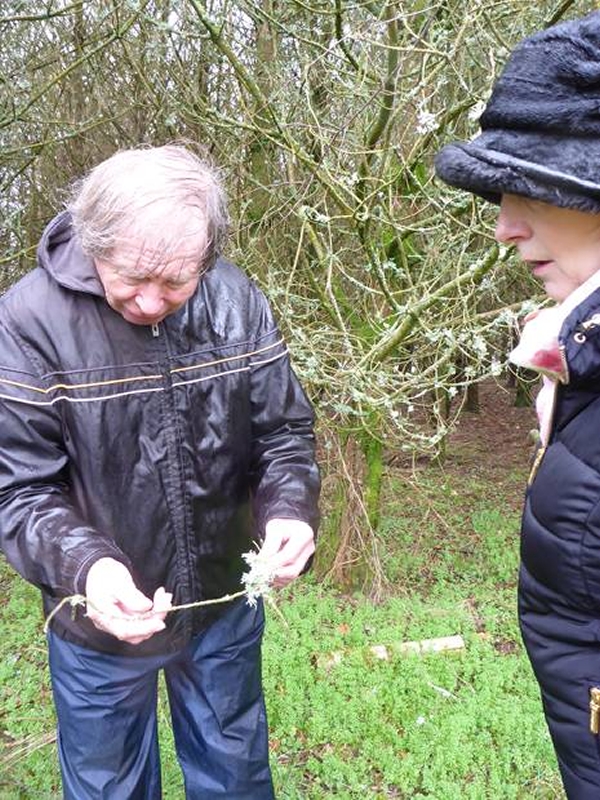
By this time we were thoroughly soaked on all our exposed parts but it wasn’t cold so we plodded happily on like lambs behind their mum. Near the old castle Ron mentioned the marines who used their plastic explosives on it as target practice for the invasion of Sicily and then we were nearly home, determined to explore the little site for ourselves as you can see in the pictures.
I was just leaving reception where we had thanked Ron for his time when I heard him say to the lovely lass at the desk, “My God it’s wet out there!” It’s not rain though!
Early the next morning Rob and I returned to the ruined Brunston Castle before heading off with the family to the intact Culzean Castle. These photos are of Brunston Castle.
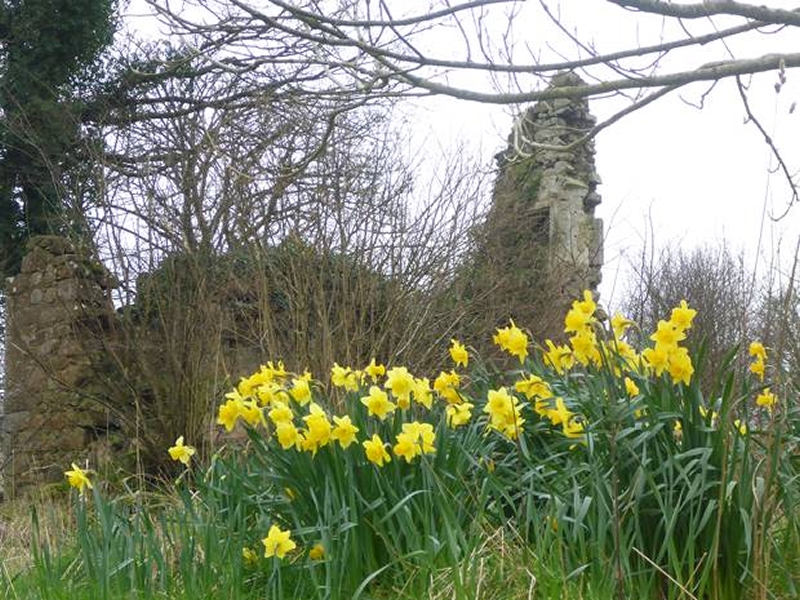
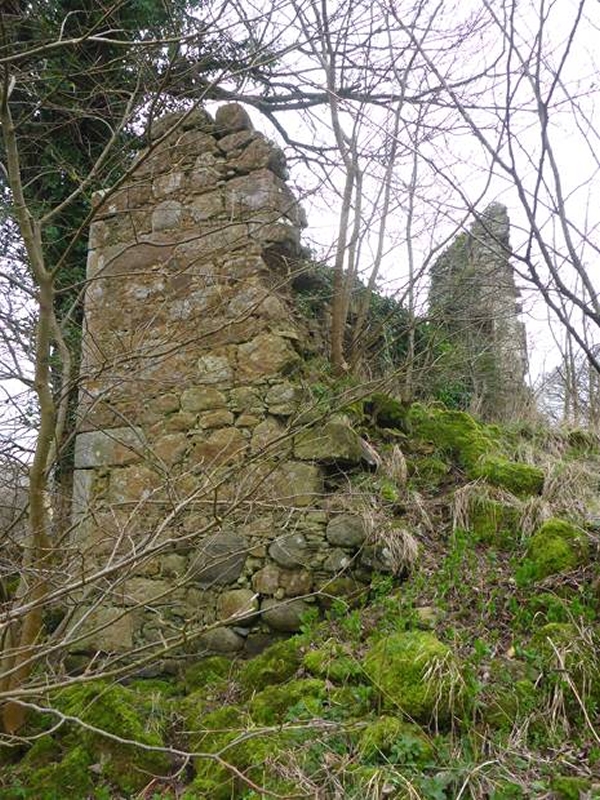
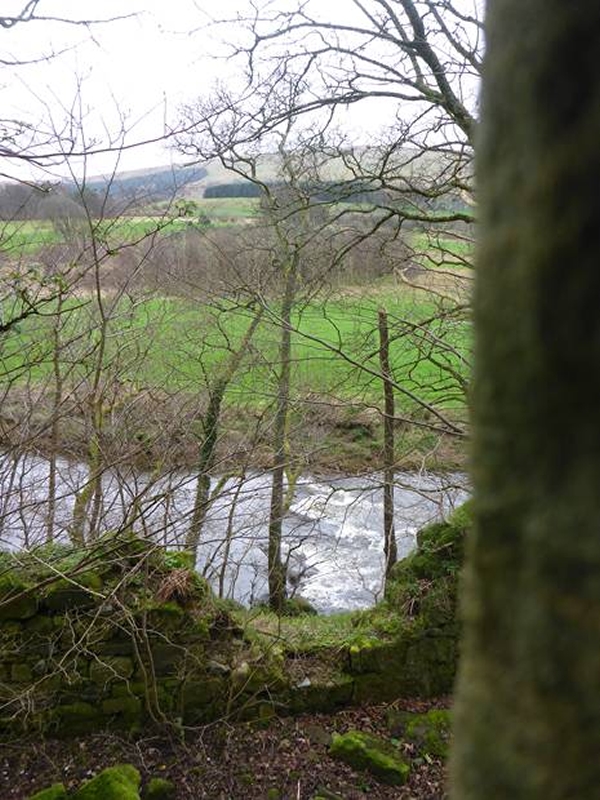
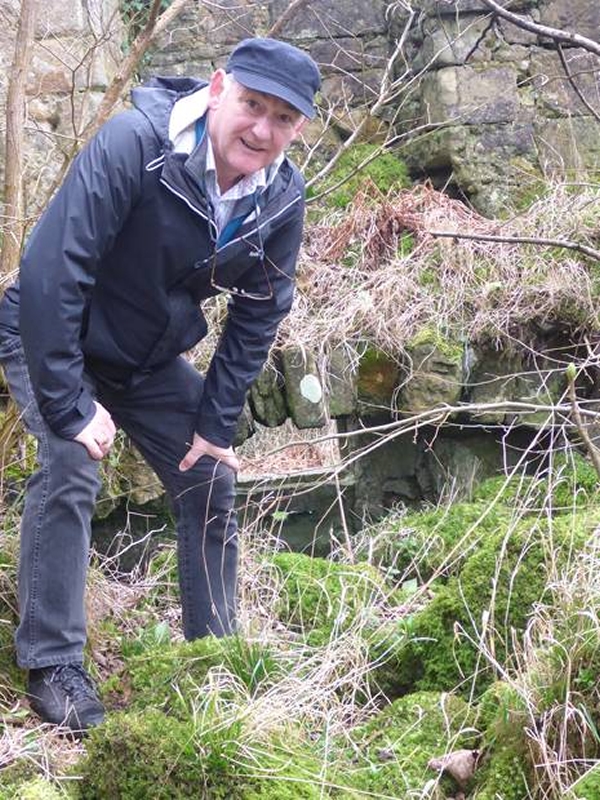
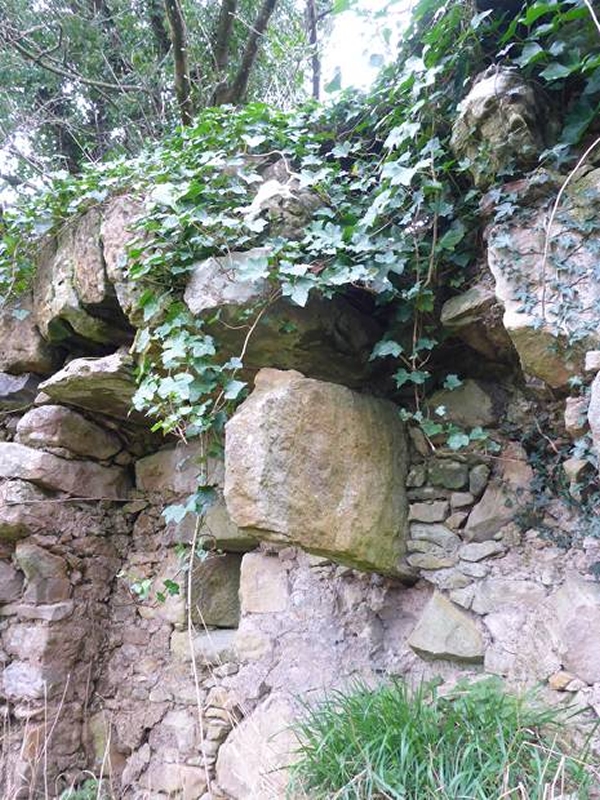
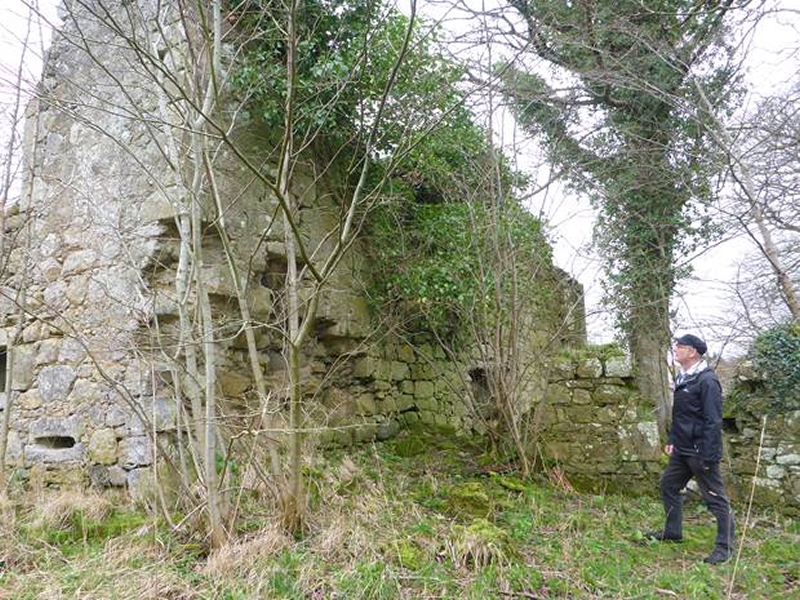
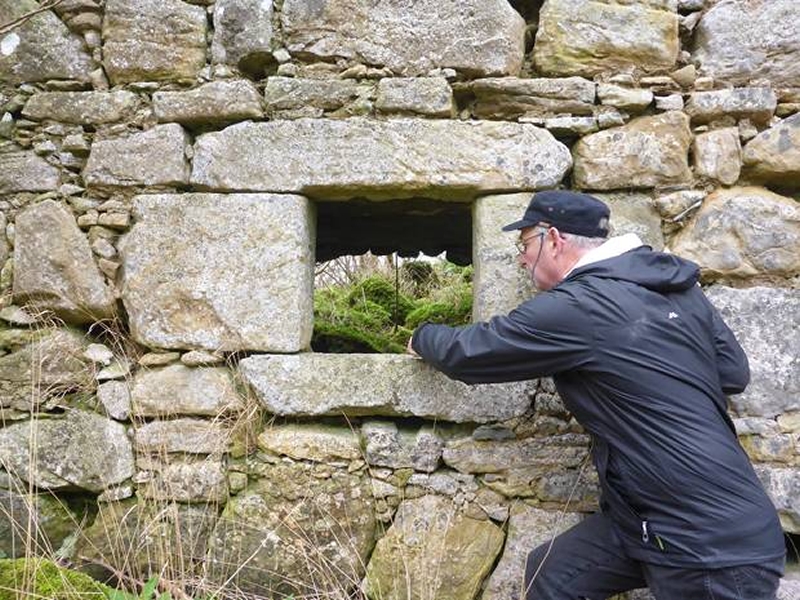
To the Castle and Caves of Culzean
The day dawned warm with the promise of sunshine through the early morning mist. Rupert and George were prepped and ready for some castle exploration and none of us were disappointed. Even though the interior of the castle itself was still in its winter sleep and not open until the start of April there was masses to explore in the grounds and on the beach.
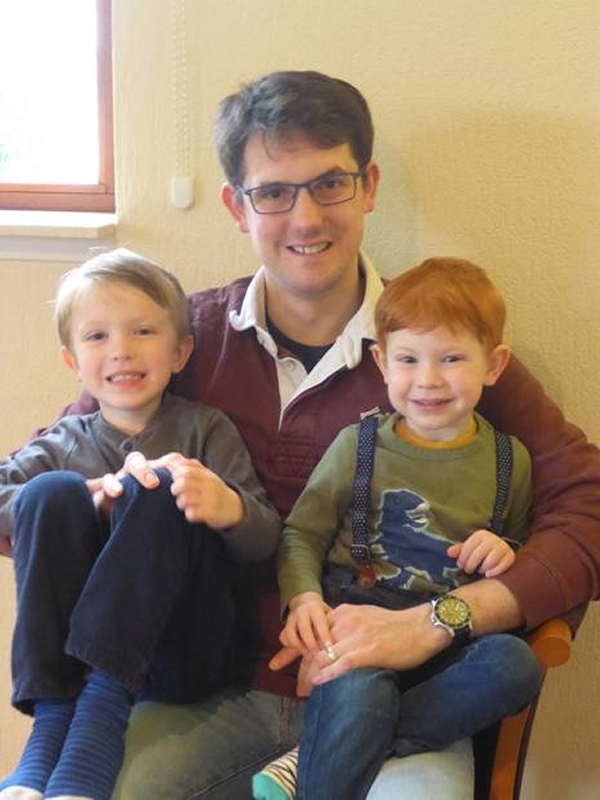
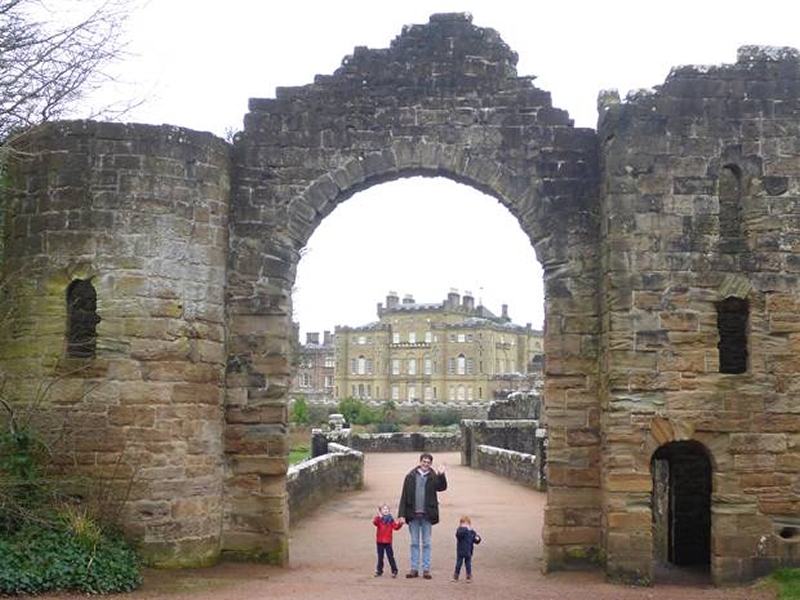
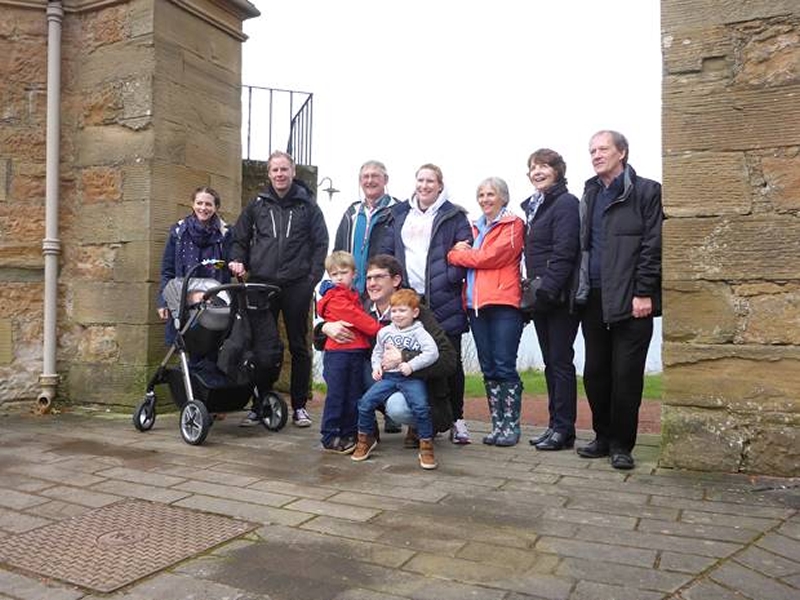
We share our love of sailing with none other than the 3rd Marquess of Ailsa, Archibald Kennedy (1847 to 1938) 14th Earl of Cassilis, (pron. Cassels) 16th Lord Kennedy and 3rd Baron Ailsa. As you can see he made good use of the boathouse and his natural enterprising spirit. The castle is now run by the Scottish National Trust and along the beach we found the education building which runs interesting courses and just near the shore the bathing house where folk could change ready for a dip in the warm waters fed by the Gulf Stream. Picture Archie on his first voyage to sea in a laundry tub. My first voyage was in an eleven foot dinghy, ‘Little Zoonie’, off Worthing beach on the south coast of England under leaden skies.
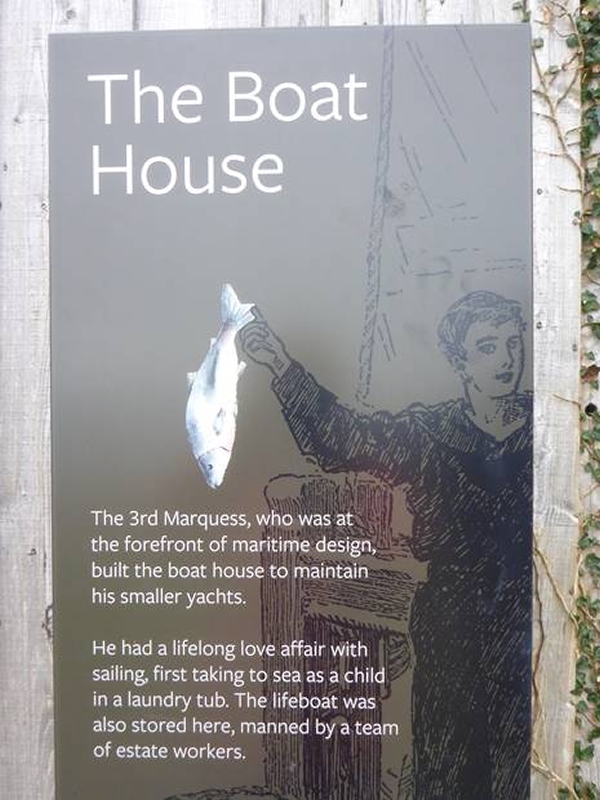
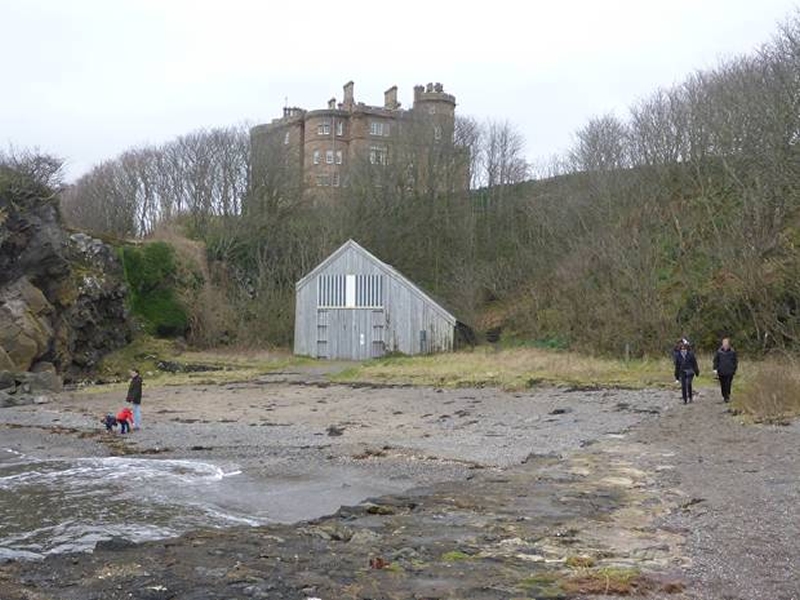
The 8th Marquess was the last Kennedy to be born at Culzean (pron. Culleen) and was raised at Cassilis Castle. His younger brother David now holds the title after Archibald Angus Charles Kennedy died suddenly at a dinner in Florida on the eve of the Central Florida Highland Games in 2015. A multi-talented man Archibald is well worth your research on Google if you are interested. David, 9th Marquess of Ailsa was in the news when he wanted permission to have eight giant turbines placed within sight of Culzean Castle in a move to the future of renewable energy and in line with the rest of the British Isles. He was ‘trumped’ by Donald Trump whose assets lie nearby at Turnberry. But more about him later.
Our little group wandered down through the pretty walled garden to the modestly named Swan Pond from which ice would no doubt have been taken in years past and stored in earth walled ice houses. We had spotted some Highland Cattle in the Deer Park and made a detour for a photo shoot to prove that they really do exist and not only on tins of shortbread.
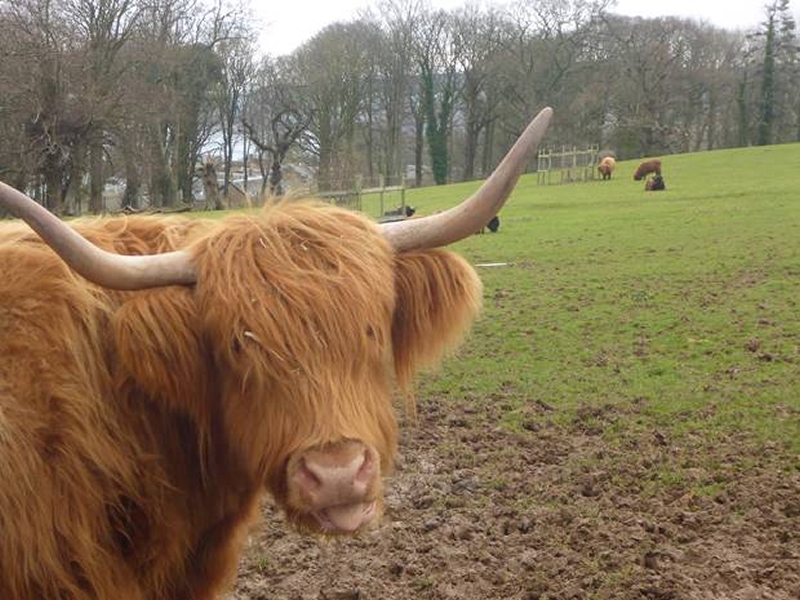
Then it was to the beach beneath the high rocky cliff, upon which the Robert Adams castle stands, to explore the natural caves visible only from offshore. We found a tunnel in one of them that leads to the castle and was used in times of smuggling in the 17th and 18th century to import otherwise highly taxed consignments of tobacco, Congo tea, port, claret and brandy which were sold for great profit locally some being withheld for castle use too no doubt. Some of the caves have had their entrances walled with windows and doorways and can only be explored with a guide but we found our own where we could imagine the nocturnal goings on of yesteryear.
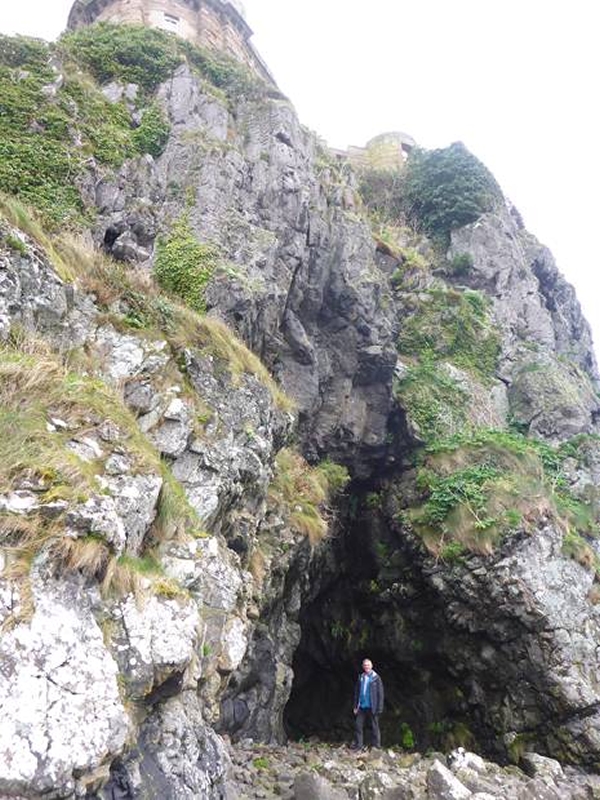

Our romantic side well and truly satiated, the gas house fed my interest in the Victorian era of invention, industrialisation and innovation. Three ‘ins’; I’ll be adding more later. Boats brought the coal by sea which was the burned to create the gas which in turn, after being condensed and purified, was stored in the gas holder that floated on water in the circular ditch you can see. Wheeled pulleys raised and lowered the gas holder depending on domestic demand. The principle was used to create the massive ‘town’ gas holders that were a feature of the urban landscape when I was a kid. Great inventors, the Scots, there’s another ‘in’ incase you hadn’t noticed.
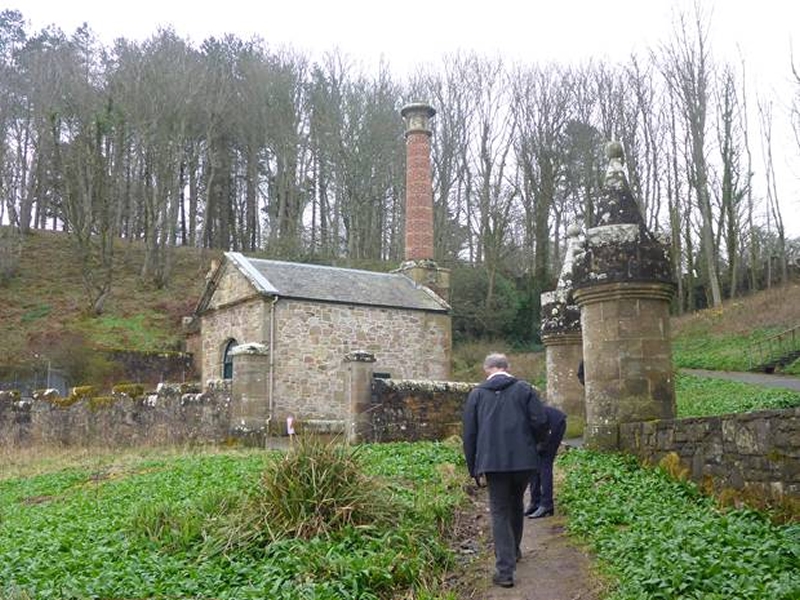
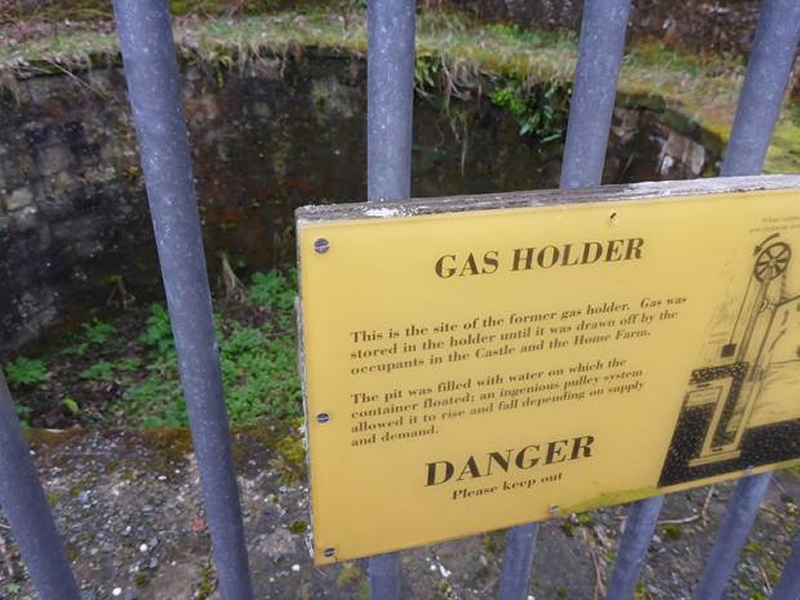
I wonder how many engineers tried to convince the Marquess that a castle powered with electricity was arguably safer from fire and explosion than one lit and fuelled with gas. Never mind, he loved sailing! And we have heard of electrical faults causing fires in buildings haven’t we, Windsor Castle burned when a spot light rested against a curtain and investigators suspect an electrical fault in the restoration project at Notre Dame.
My final ‘in’ has two n’s and takes Rob, Richard and myself to the The Greenhead ‘Inn’ for a pint of tasty Scottish Guinness in a saloon that has not changed in at least 50 years with aged honey plywood walls and ceiling. Being the only drinkers we sat near the landlord and shared snippets of conversation as we all learned how to make pencils from a TV programme. Wandering back in the dim light of the encroaching night I kept a wary eye open for any big black cats that might be prowling the deserted fairways in search of supper.
Shhh Trump’s Turnberry where the Locals prefer not to use his name
So we were told by the lady who owns the Wildings where we had eaten a few nights before if you remember. She also told us the story of Trump’s triumphant arrival by helicopter last July 2018 for a state visit. When he landed on the white dot infront of the Hotel and stepped from the machine he said, with typical deluded arrogance and raised arms, to the effect “I’m the first US President to own such a fine place in Scotland” at which point an elderly regular lady employee tapped him on the shoulder saying that was all very nice but “Would you now please move that b…….. Machine so I can get to work!”
The Trump corporation bought the hotel for a bargain £35 million in 2014 and it has run at a heavy loss since (and possibly before – hence the price) due partly to the restoration costs of replacing every single pane of perfectly good glass and all the chandeliers and building the opulent new ballroom which was the perfect place to get Milo off to sleep in his pram. I pushed the pram slowly down the corridor, through the dining room and into the ballroom and as we passed the windows over the thick carpet Milo would close his eyes against the bright outside light, open his eyes again to see the gold wall lights and close them again past another window until after the fifth window he was away in the land of nod. The ballroom has been used for a wedding or two, a boxing match and can accommodate 700 party goers.
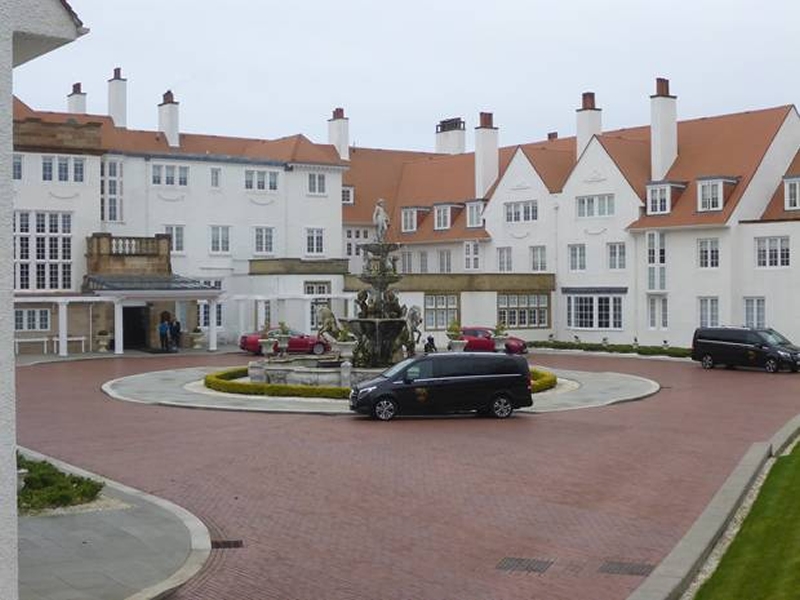
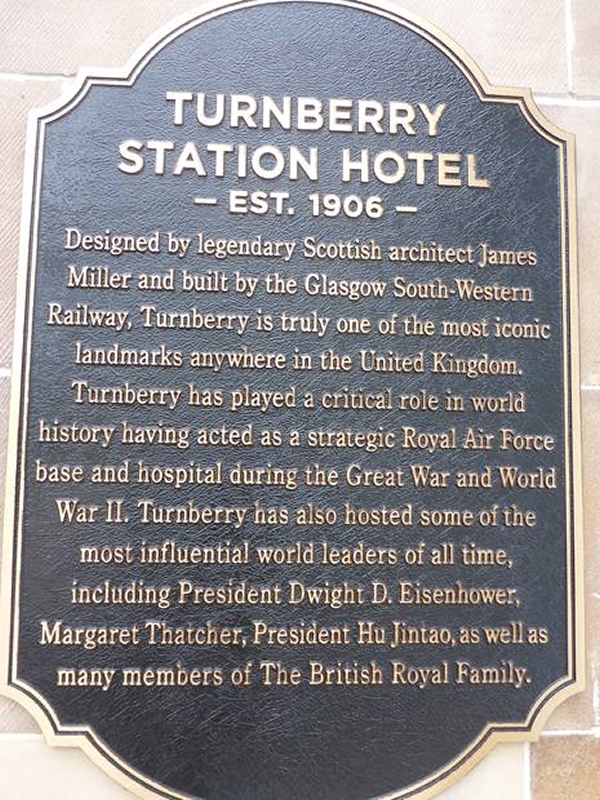
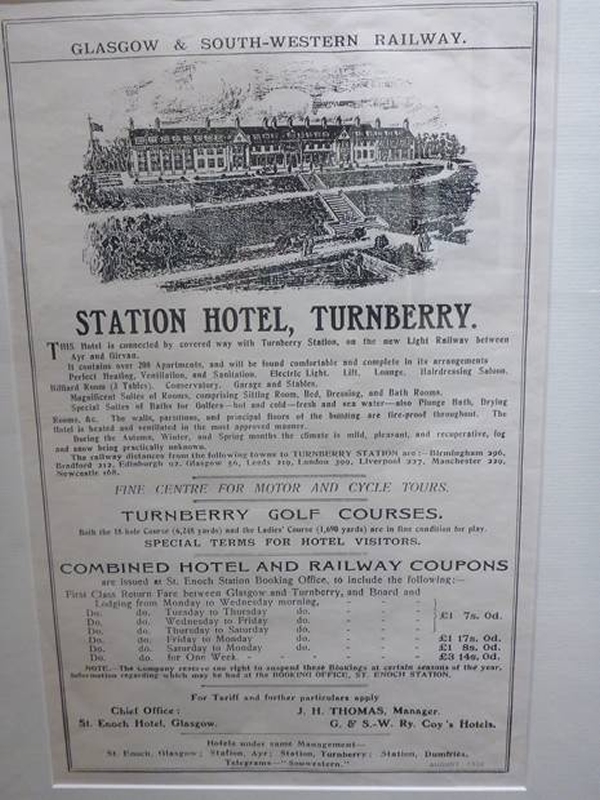
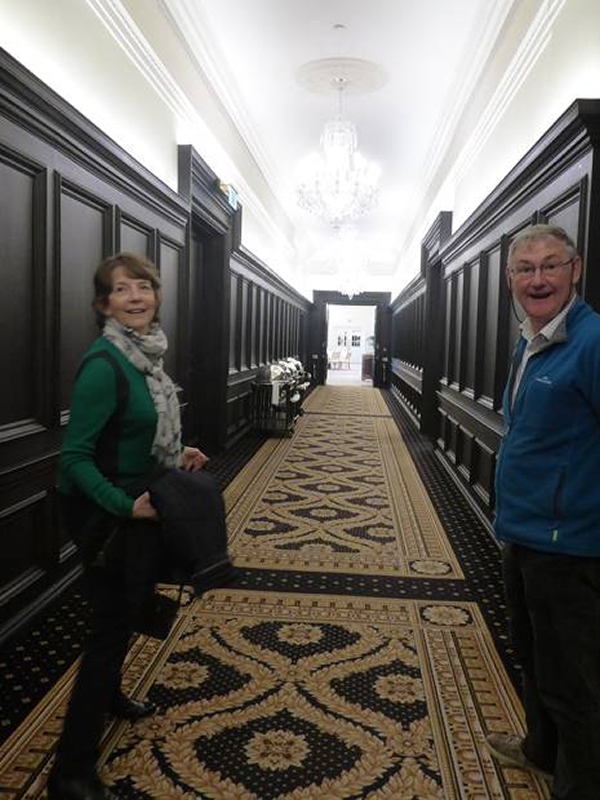
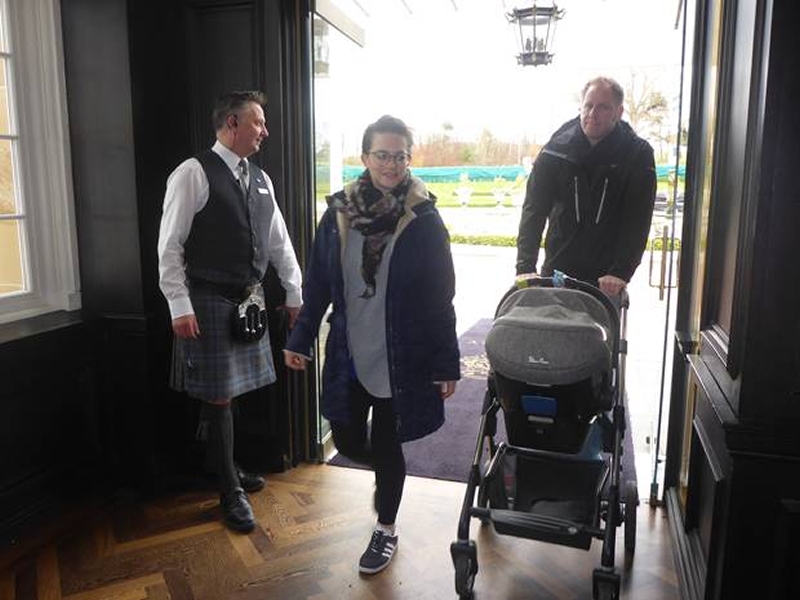
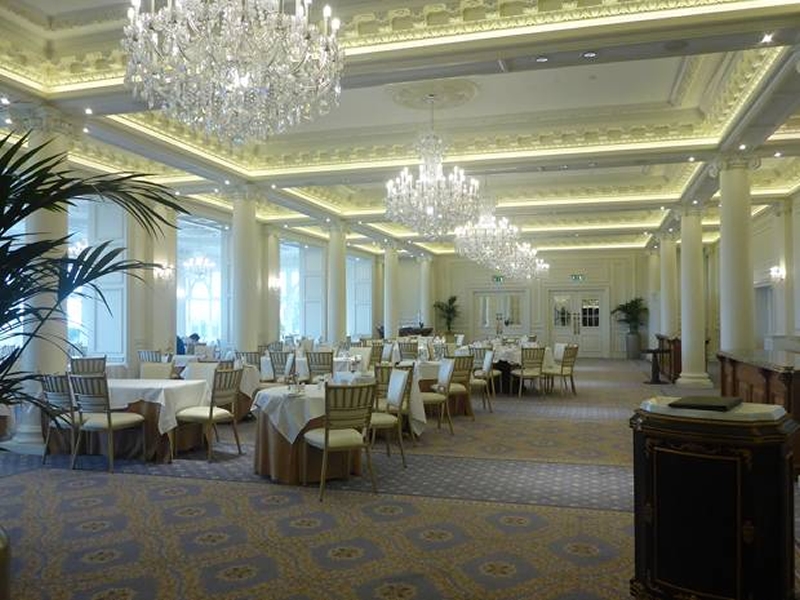
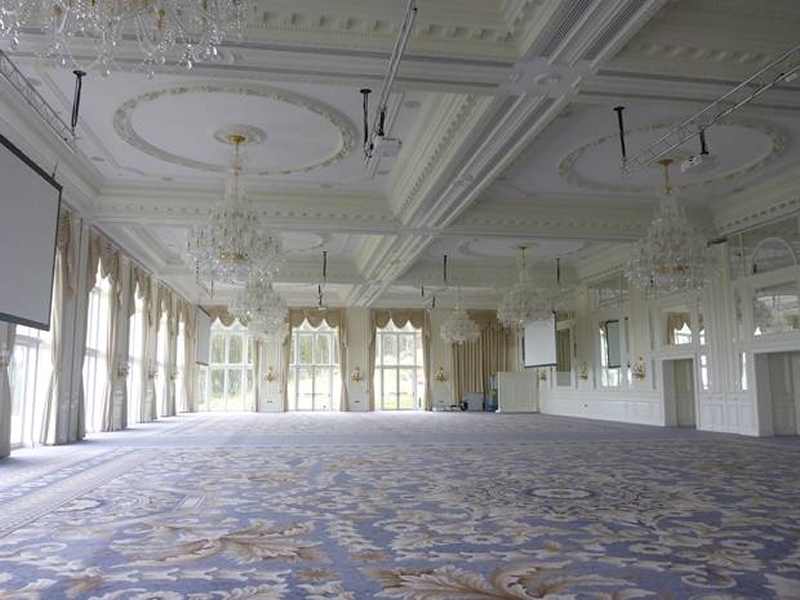

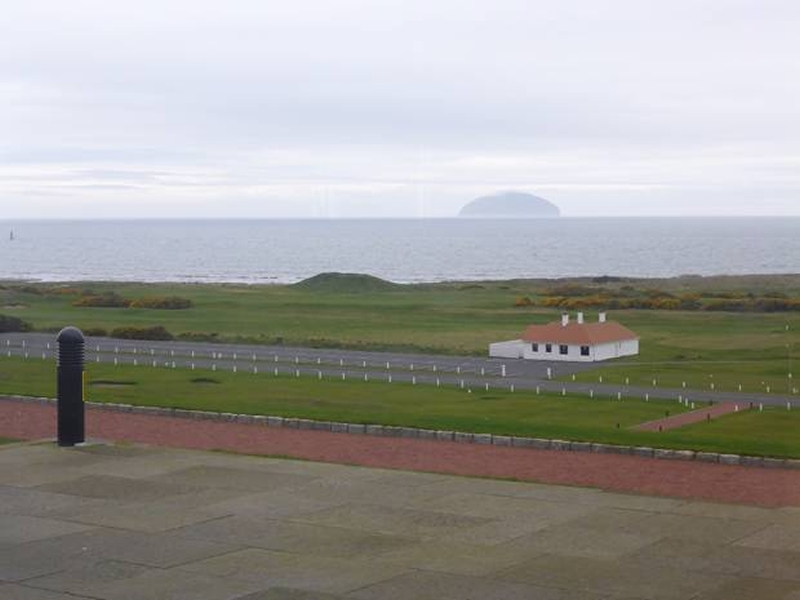
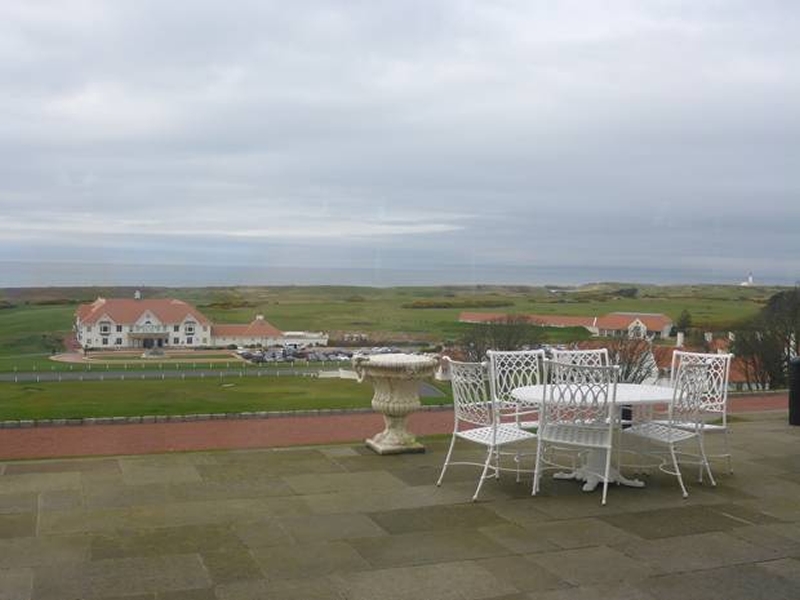
The staff were all friendly and welcoming and only too pleased to serve up cocktails, nibbles and lunch to a group of happy sassenachs. Reliable rumour has it that Don handed the ‘seat’ over to Eric just before his inauguration if you believe he can give any of his power and acquisitions away, and that Russian money has been used in the restoration as part of the money laundering process, a fact Eric now denies. One wonders how long it can run at a loss before becoming a white elephant. We checked on line and the rooms are not that expensive, so whether it is the stigma of the Trump association that prevents locals from mentioning his name or visitors from filling the rooms is anyone’s guess.
Our lady at the Wildings said she serves dinner to many of Turnberry’s guests because the costs where they are staying are steep but she had been herself a number of times for coffee and shortbread. So we tried some cocktails, Ailsa Breeze, Golfers Widow, Late Checkout and The Last Cocktail with a plate of shortbread. Charly and Tom enjoyed the best fish and chips they had ever tasted while we passed the time with staff in the ballroom.
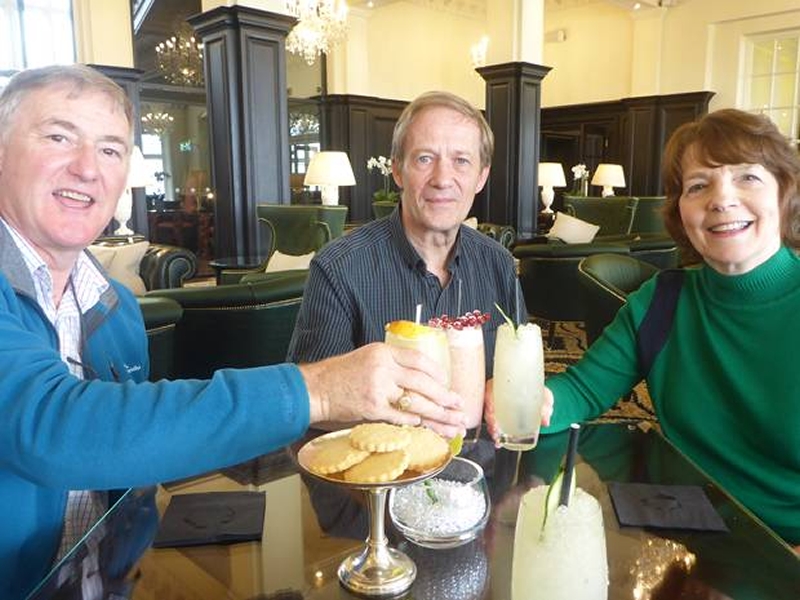
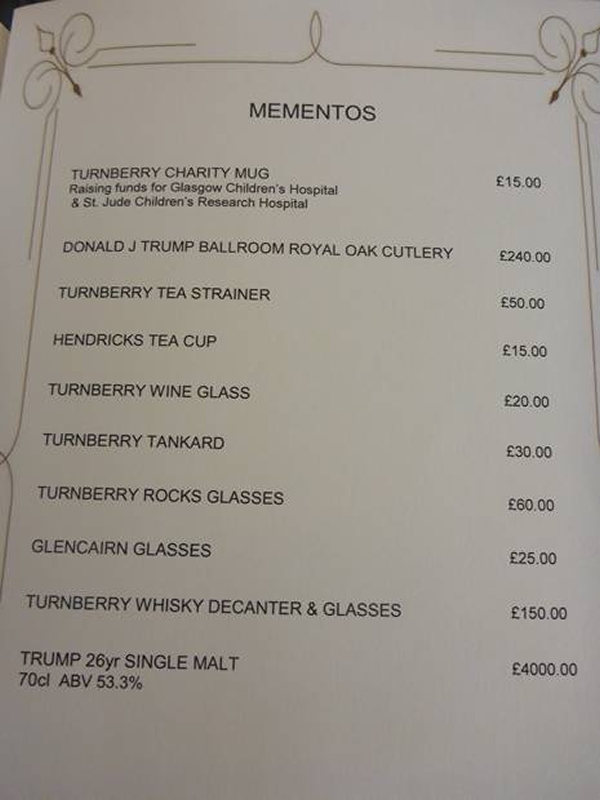
From there we drove past the nearby disused RAF airfields just outside Maiden that were busy in both World Wars and used as a training base in the Second World War and parked up again for the short walk to the fine Stevenson Lighthouse which is still fully functioning. The views across to Ailsa Craig and the illusive Isle of Arran and up and down the rugged coast were beautiful and of course steeped in the history of Robert the Bruce, Robbie Burns, the passing of the remnants of the Spanish Armada and the nocturnal activities of smugglers and more recently the industry of the industrial revolution and the passage of cruise liners and the occasional pleasure yacht. Maybe one day we will sail by in Zoonie.
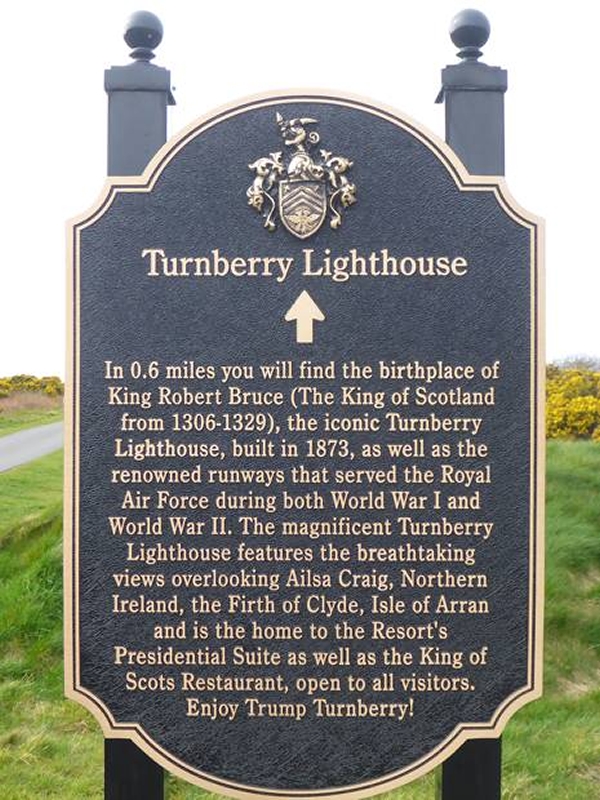

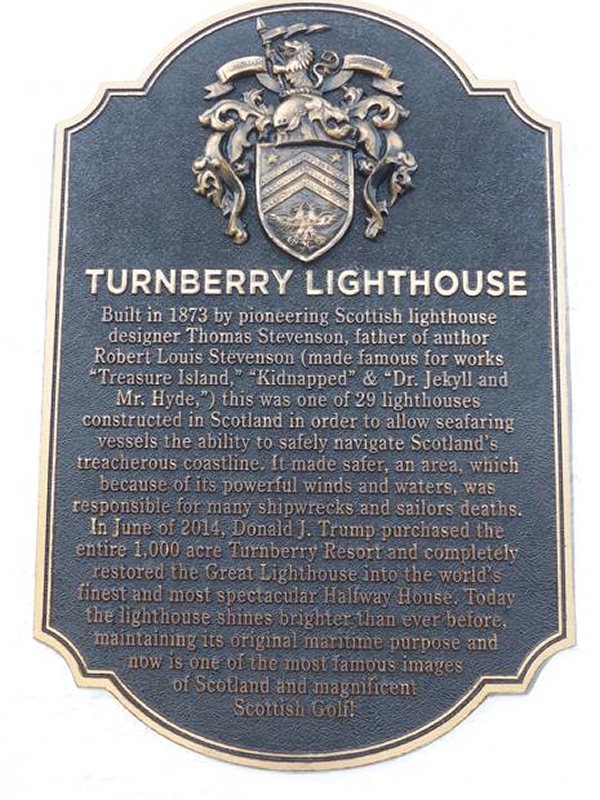
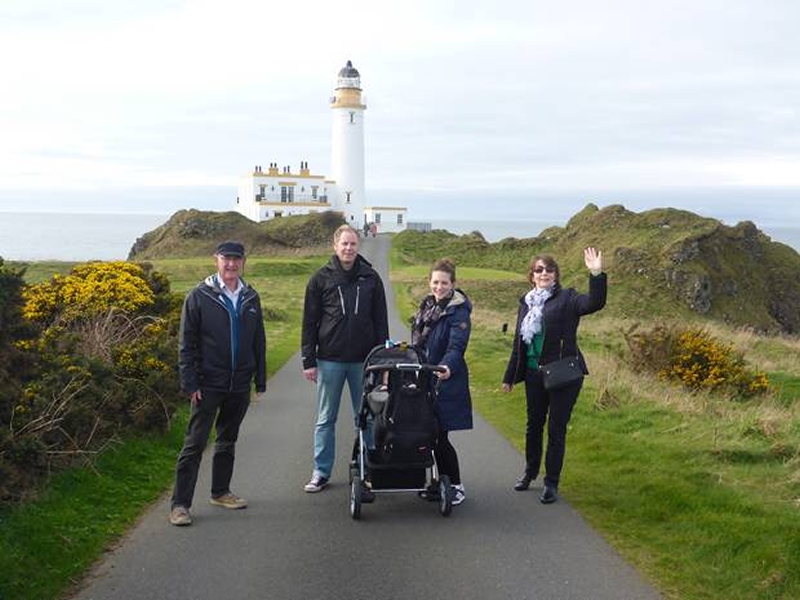
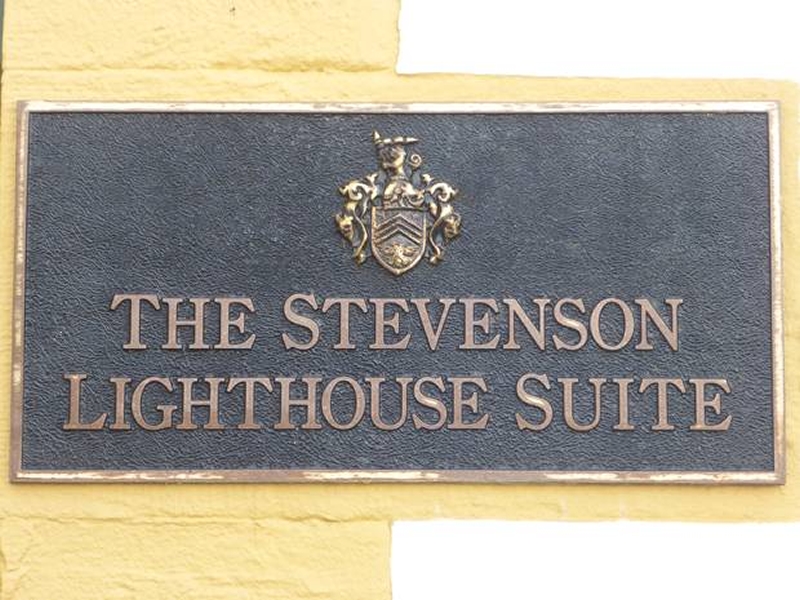
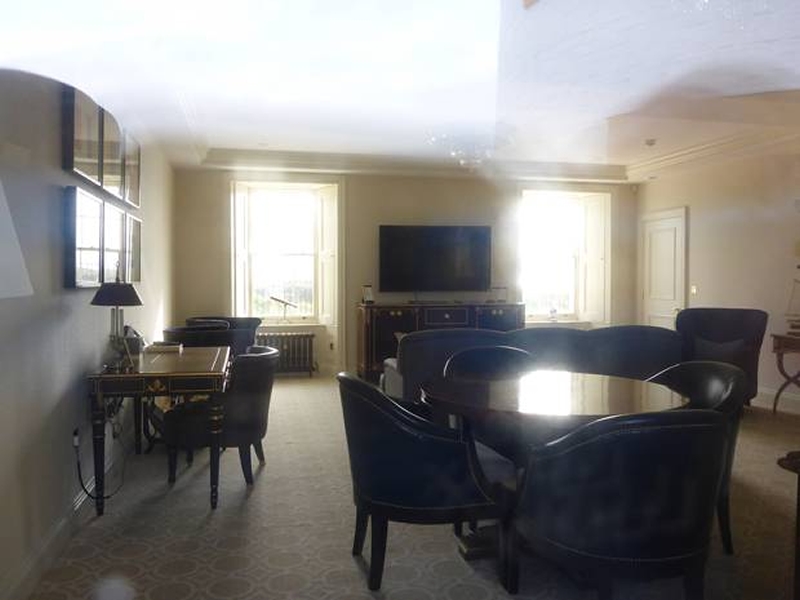
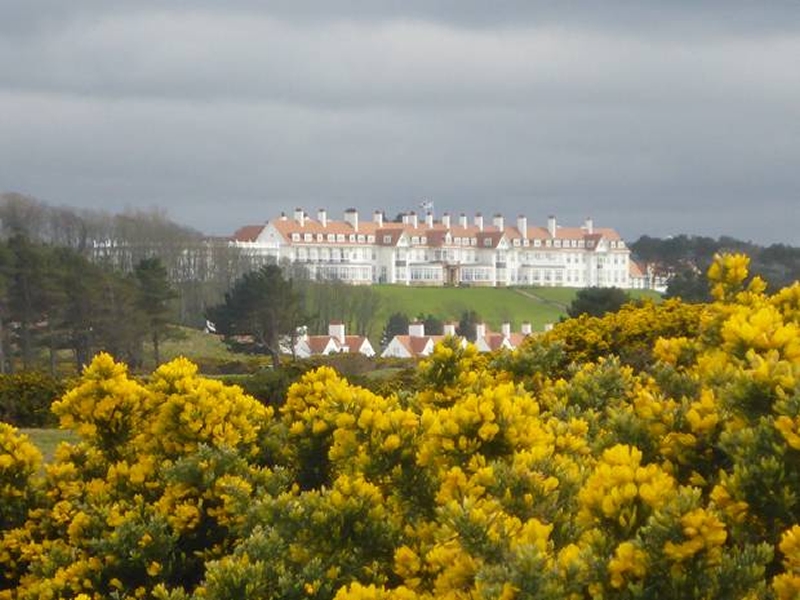
A few miles up the road towards Ayr we drove, to Alloway where ‘The best laid schemes o’ mice an’ men Gang aft agley’
(Robbie Burns)
‘Gang aft agley’, go often awry, how true a statement as we well know having spent almost two more unplanned years in New Zealand. Robbie Burns wrote his poem ‘To a Mouse, on turning her up in her nest, with the plough’ in November 1785 shortly after disturbing the mouse while ploughing a field on his farm. Such seemingly trivial incidents led his creative mind to write poems that explored the world he lived in and the frailties and weaknesses of the human state and showed a humanitarian mind.
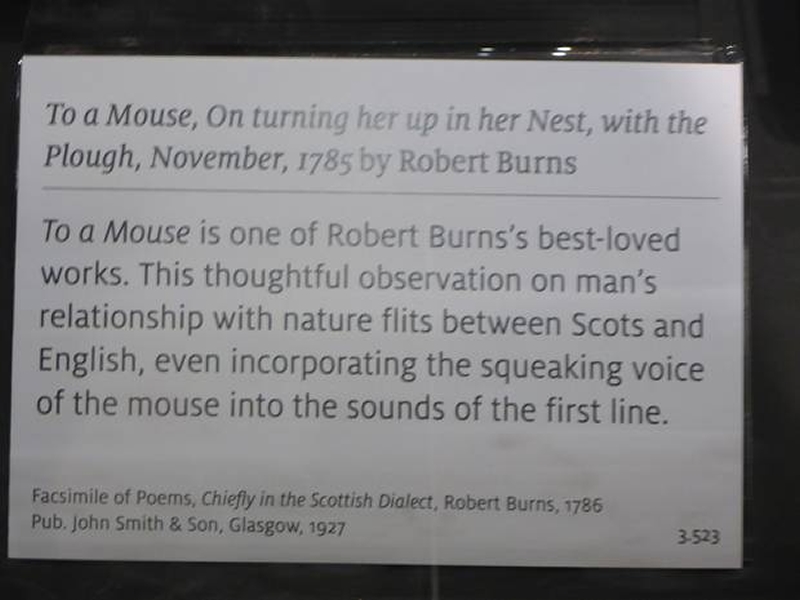
‘Wee, sleekit, cowran, tim’rous, beastie….’
They are also reflections of himself, his incurably romantic mind that ignored the bonds of marriage, although Jean Armour whom he married in 1788 was the love of his entire adult life, he had other lovers and through her empathy with him she accepted these. His expansive heart and wayward behaviour must have sorely vexed her though.
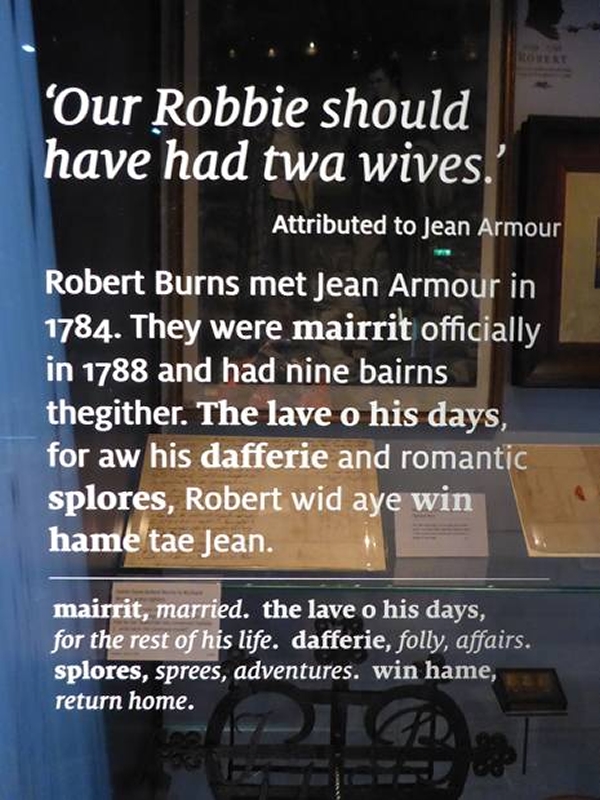
In the painting he is looking down at the mouse which you can see running away from him under the plough.
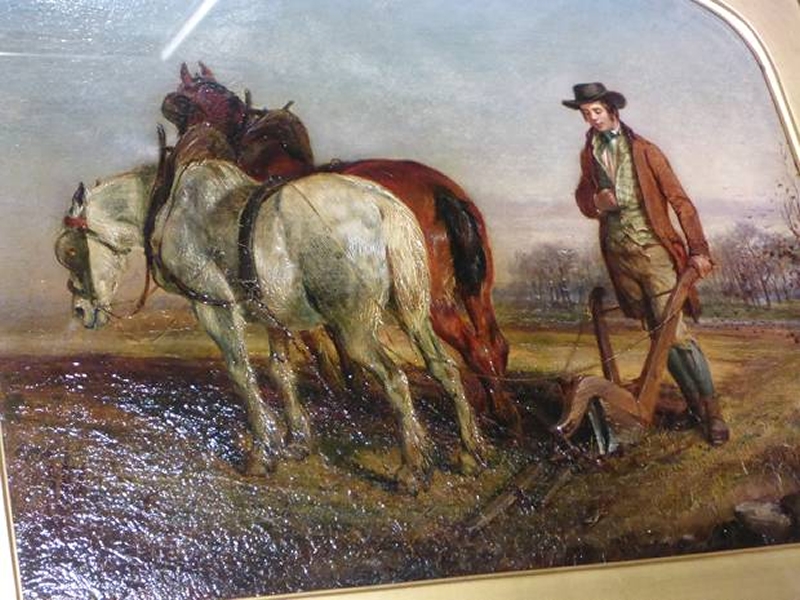
So highly thought of at the time and since were his works that skilled artists took up the beautiful stories in other forms of art and literature. The wood carving you can see of Meg carrying her inebriated Tom over the Brig o Doon (bridge over the River Doon at Alloway, his birthplace) is the last of a series of four depicting scenes from his epic poem ‘Tam o Shanter’ and John Steinbeck used the theme from ‘A Mouse’ in his book ‘Of Mice and Men’. If you are into humanistic poetry I recommend Tam o Shanter which can be seen in its original and anglicised form at www.robertburns.org.uk under The Alexandria Burns Club.
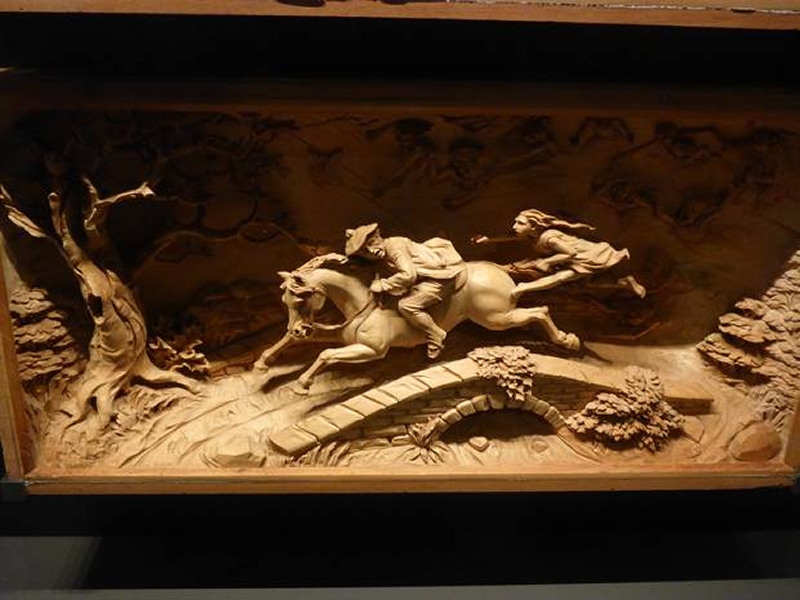
The story of the poem is simple and yet carries a message. Tom and his old friend Souter (cobbler) John go to market and after making their sales take themselves and their takings to the pub where they drink for more than a day and night. Tom becomes overly friendly with the landlady and eventually races away home. As he approaches the ruined kirk (the church was a ruin in Robbie’s time and his father is buried there) he hears and sees the witches and warlocks dancing within and is drawn to them. There is among them a comely wench called Nannie who was renowned locally for her strength and beauty and happens to be wearing a paisley underskirt (Cutty Sark) which is too small for her having grown some since her grandmother gave it to her years before.
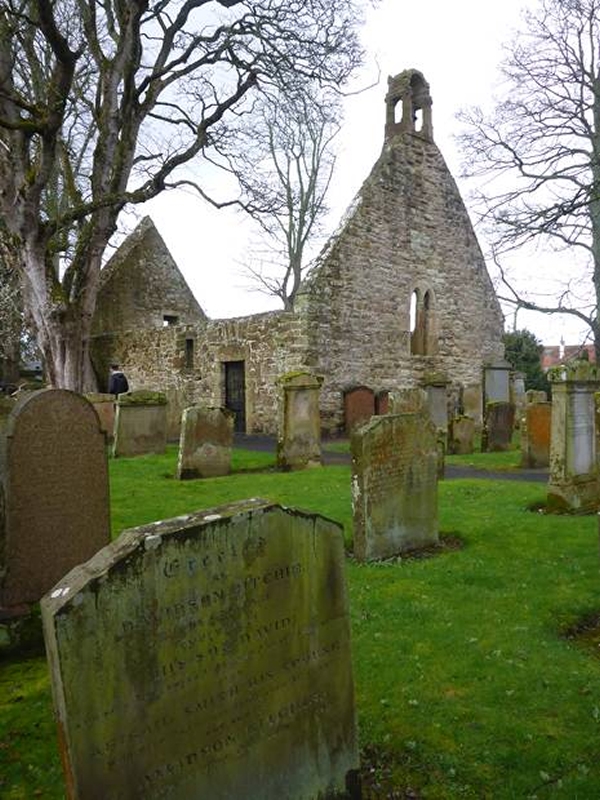
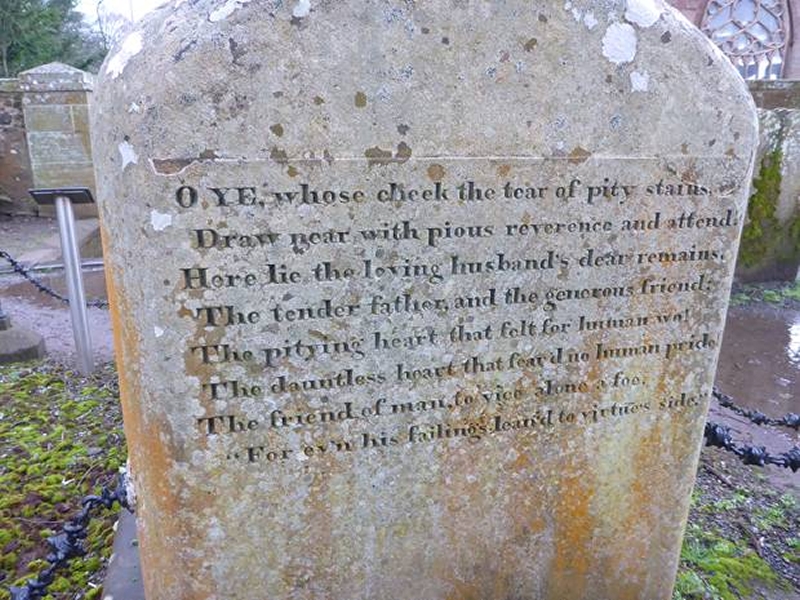
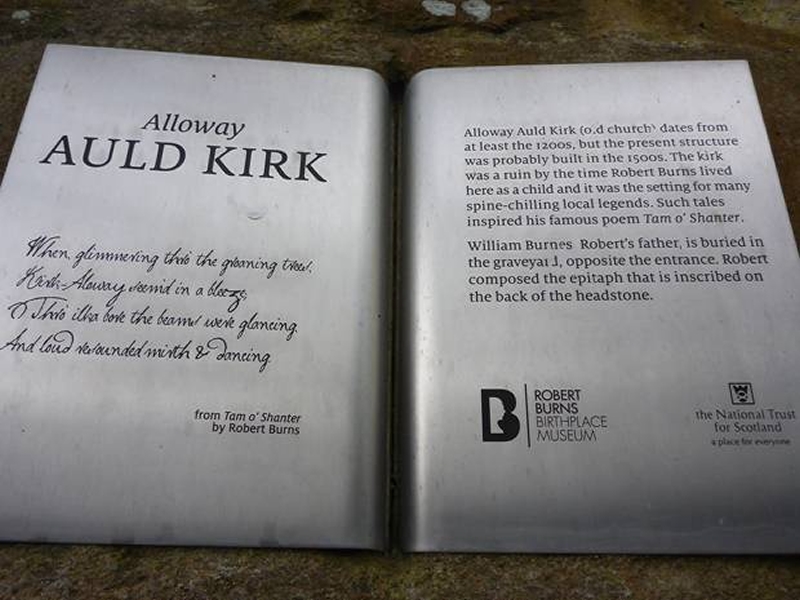
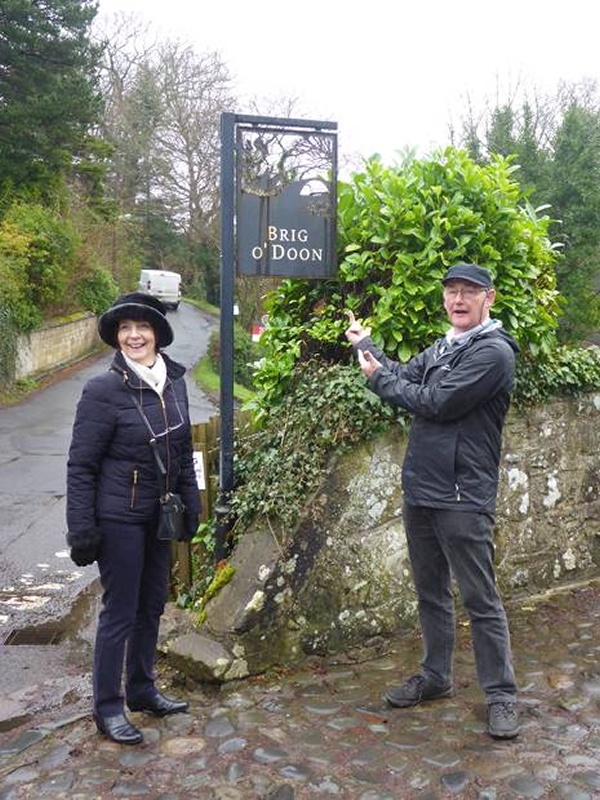
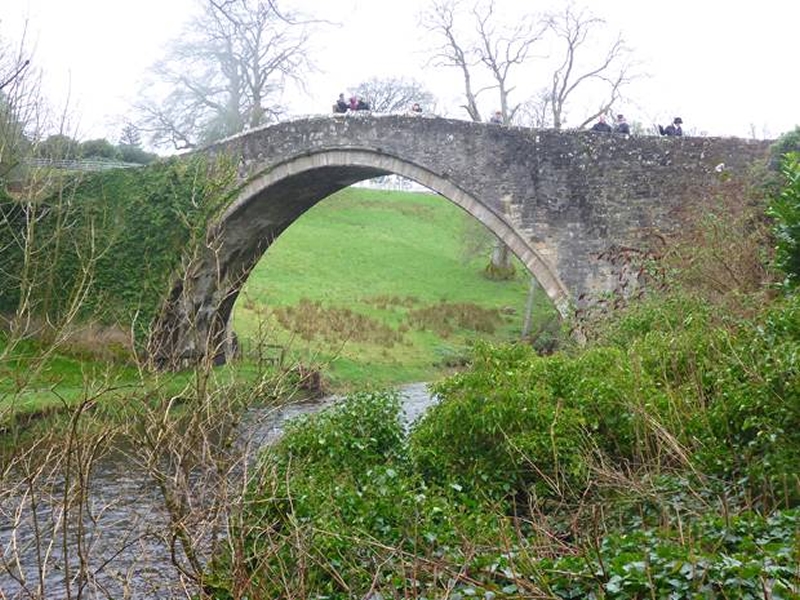
As you can imagine Tom is soon aroused and after he has had his way with Nannie is back on his other mount. Meg races towards the centre of the Bridge but Nannie is having none of it and she grabs poor Meg’s tail. A tug of war entails (!) and neither wins because Meg rides away without her tail and Nannie is left with nothing but a limp handful of grey hairs.
Moral of the story is if men imbibe and play away they might be found ‘deep drown’d or catch’d wi’ warlocks’. Such reckless pleasures are shortlived ‘like snow fall on the river, a moment white – then melts forever’.
The Burns museum is a state of the art recent creation full with interesting facts and artefacts about the bard. The exquisite marble statue of Robbie with his lover Highland Mary, his finely knitted sock and a tiny miniature of him with his brother to name just a few. I was amazed to learn that he most likely died from the same heart disease that caused my Robbie’s illness in 2017, endocarditis and he suffered from depression, writing some of his finest and darkest works in the winter months, a possible indication of the condition known as SAD, caused by the lack of sunshine in the winter.
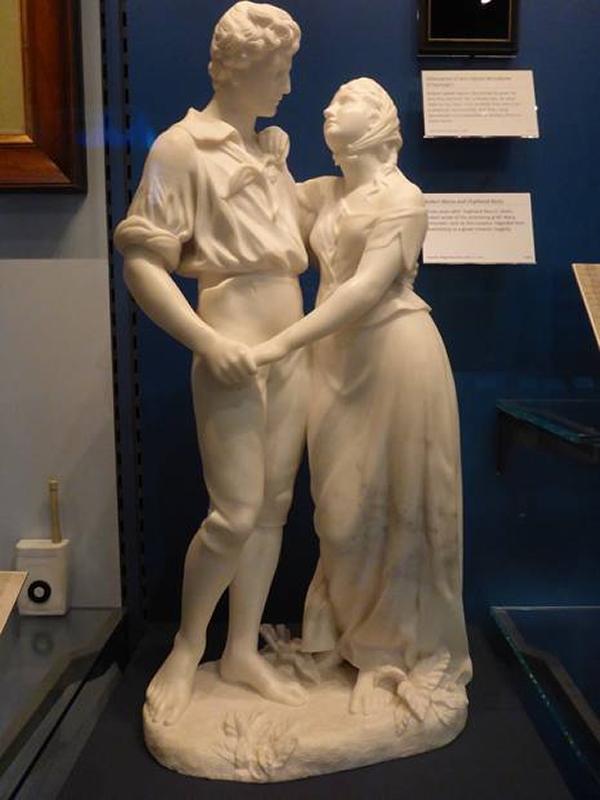
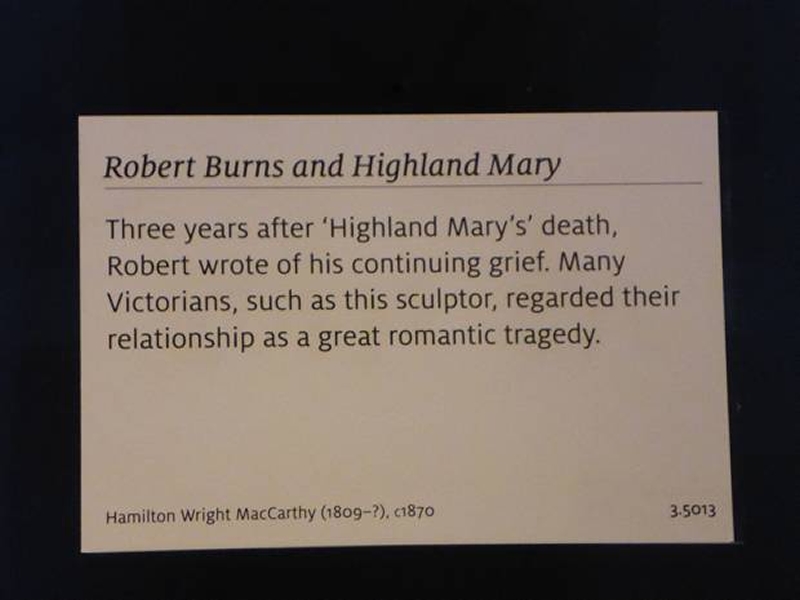
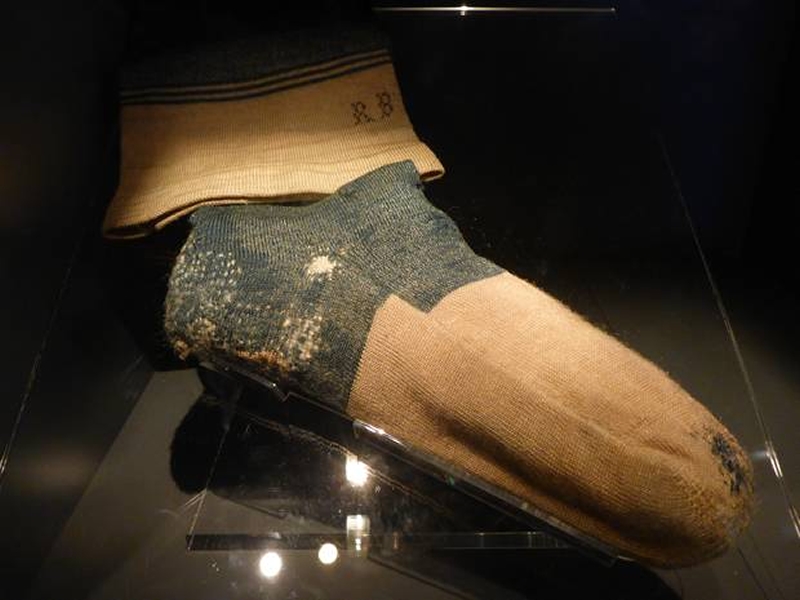
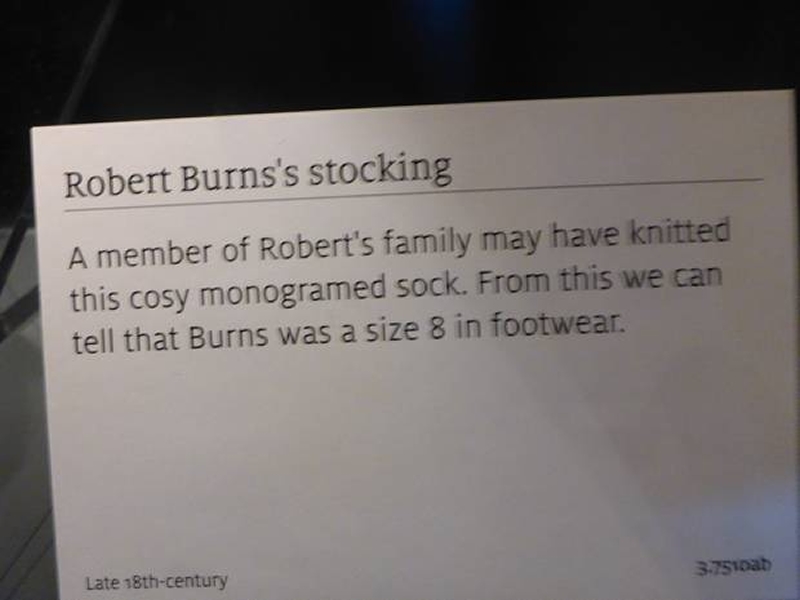
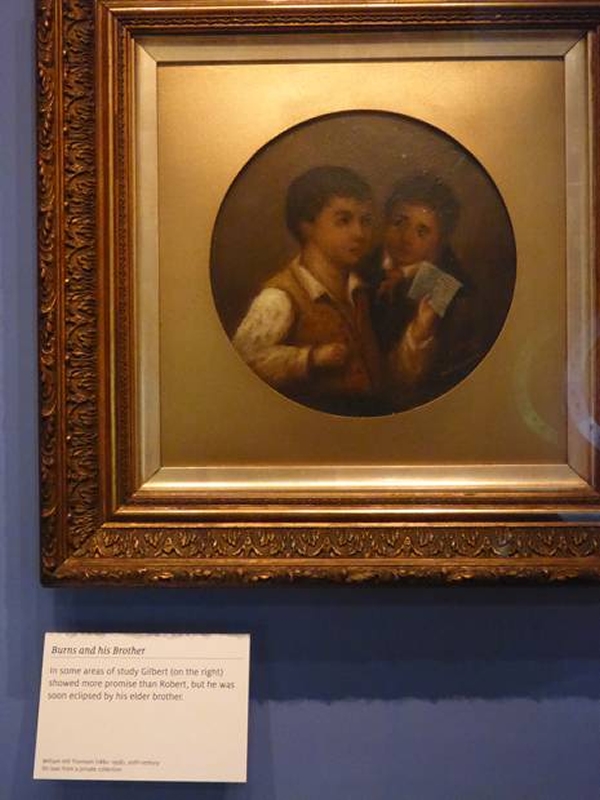
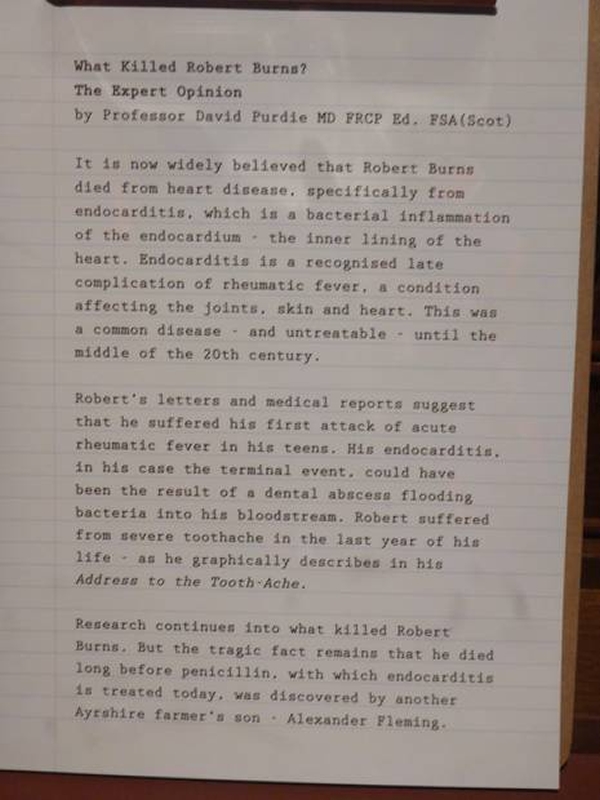
After absorbing the delights of the museum it was time for lunch before going on to his birthplace where he spent the first seven years of his life.
Brig o’ Doon House has been built right next to the Doon River and just a few metres from the famous bridge. It is warmly Scottish with attractive tartan carpets and my Cullen Skink Chowder of smoked haddock, leeks and potatoes was delicious. Charly and Tom ordered a cream tea with Cornish clotted cream and chips and discovered that a chubby chip smothered with cream and jam is a delight worth inbibing.
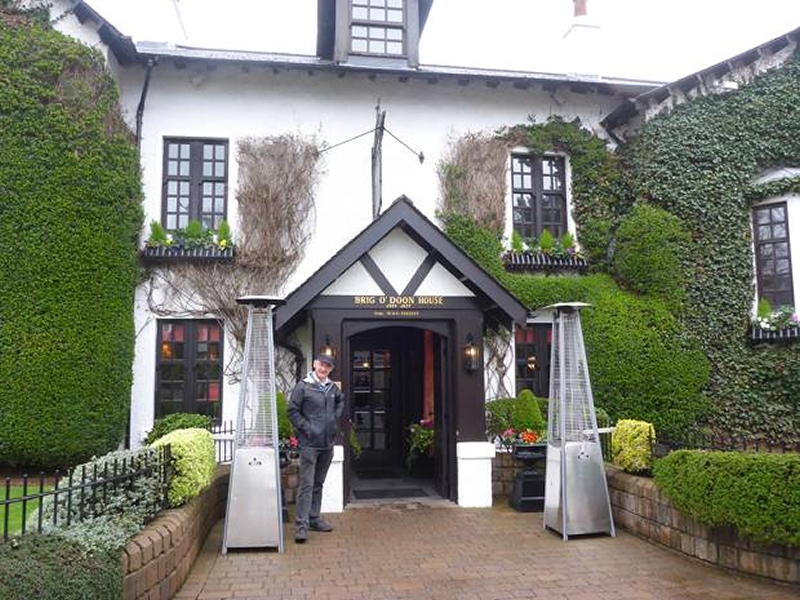
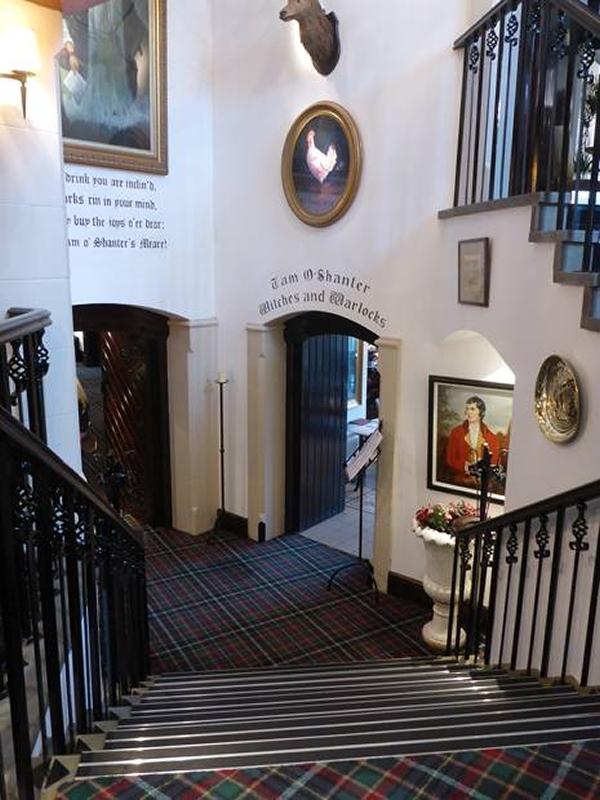
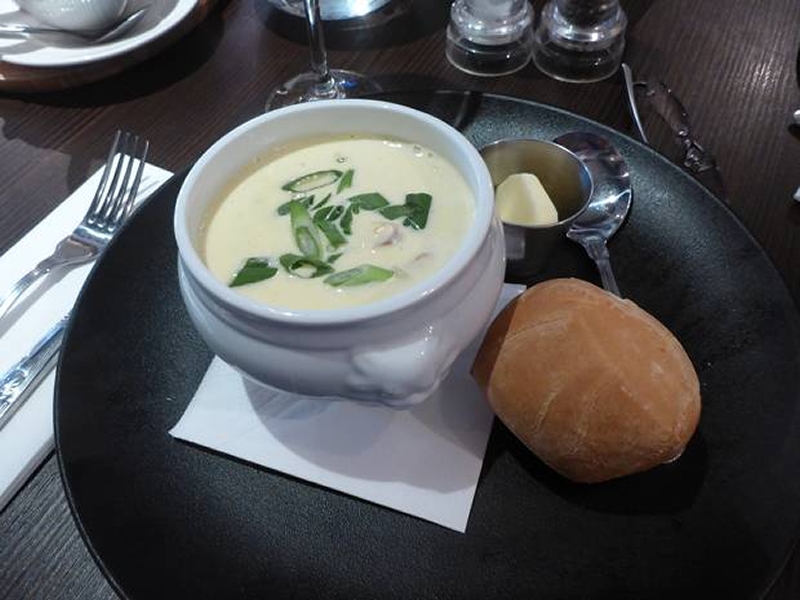
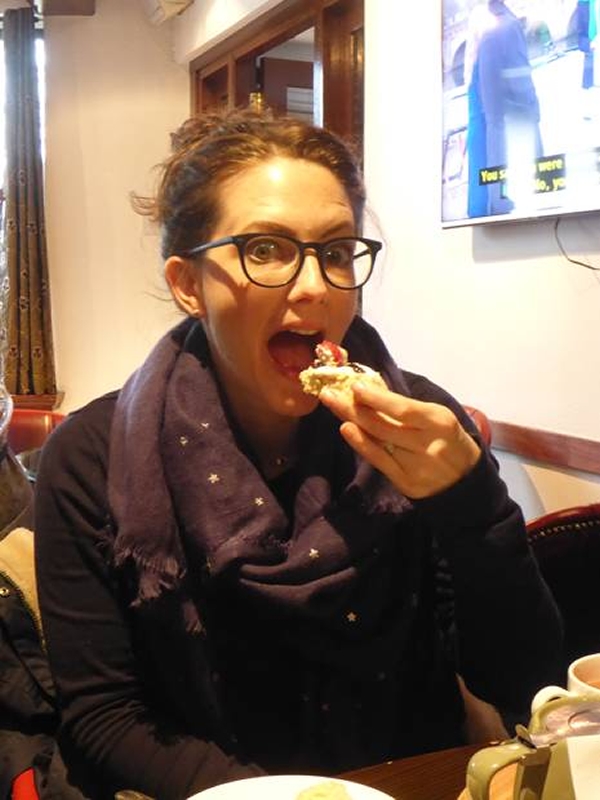
The rain had eased by the time we walked through the old village of Alloway to Robbie’s birth home, a four roomed (two for the animals) cob cottage with a nice big garden for growing food and flowers. It has been carefully restored and cared for but their plea for donations to prevent it from falling in to disrepair did not somehow fit with the vast numbers of visitors who enjoy visiting throughout the year and paying the entrance fee.
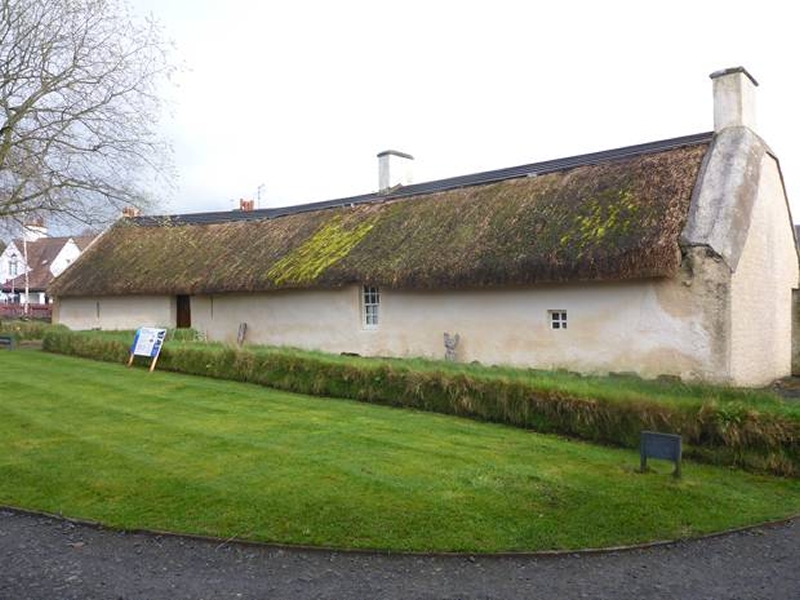
It wasn’t hard to imagine Robbie and his siblings wriggling about on the chairs as they learned the basics of reading and writing and sitting together on a Saturday evening in the warm and cosy parlour as their father read from the bible, but what is truly extraordinary is that a mind like Robbie’s should grow and rise above all others and his delightful literary creations should travel to the corners of the earth where they are still enjoyed and revered. That’s what I love about culture, how the human creative mind reinterprets reality into the many forms of art. For his social commentary of the times he lived in he was on a par with Dickens.

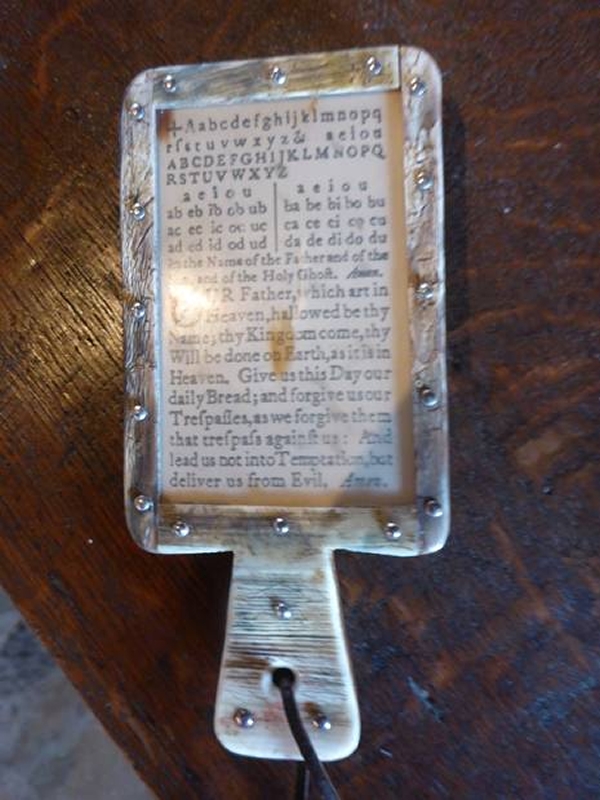
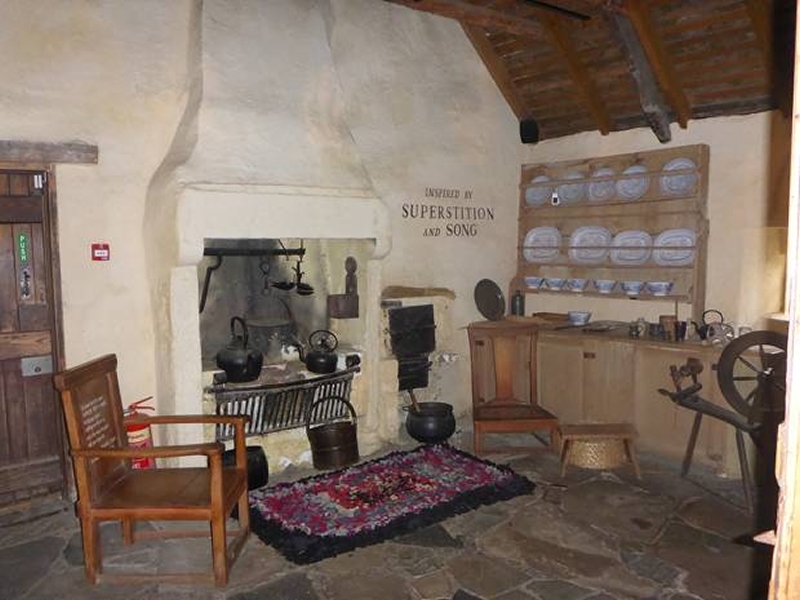
The next morning dawned with weather in complete contrast to that of our arrival and we were able to venture down the road that was closed due to flooding before. A long, windy glen road driving towards the rising sun with quintessentially Scottish lowland vistas unfolding along each side of us was pure magic. I just had to stop and take a couple of photos to show you. We will be back, Scotland and maybe in Zoonie, who knows.
